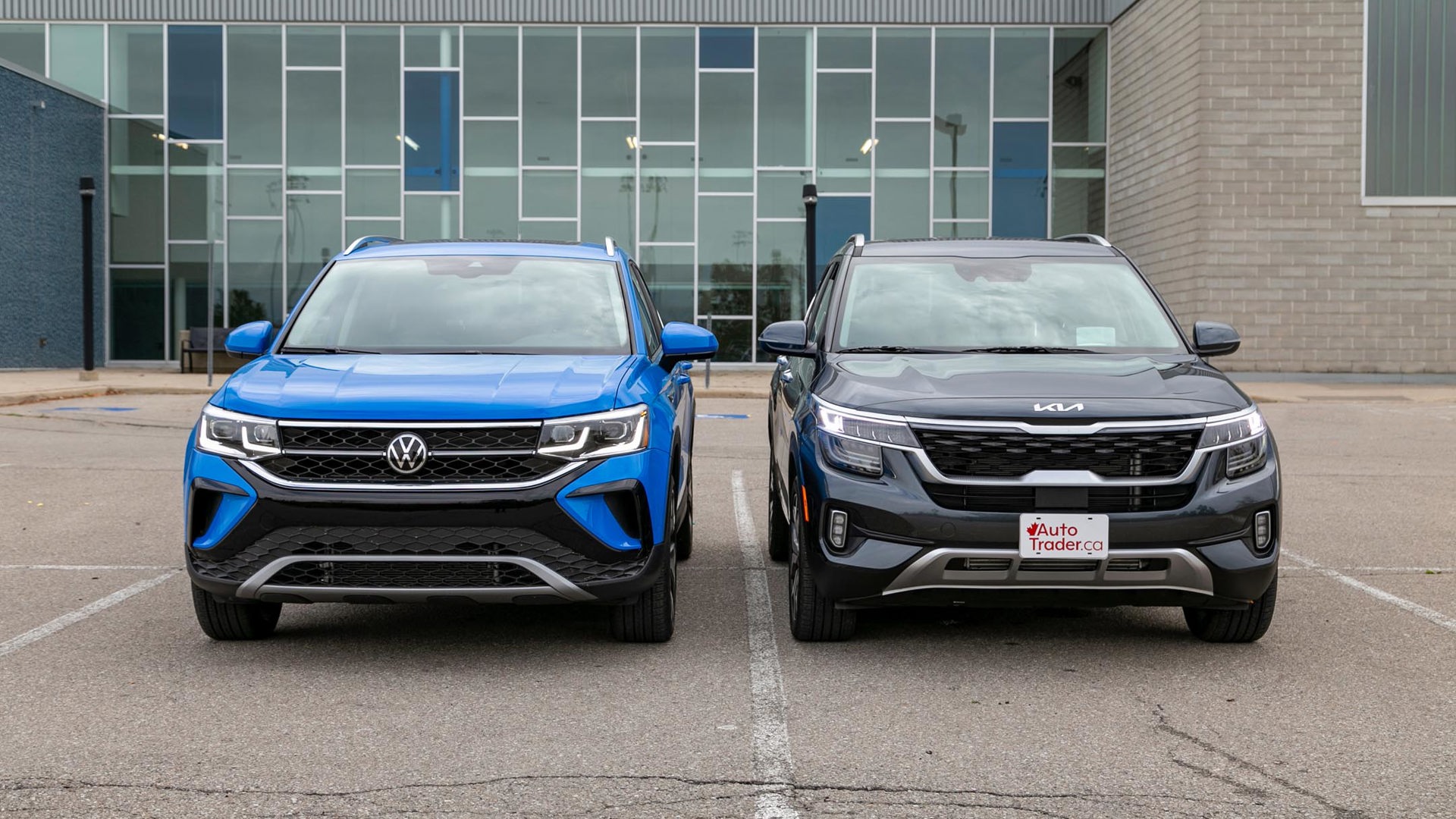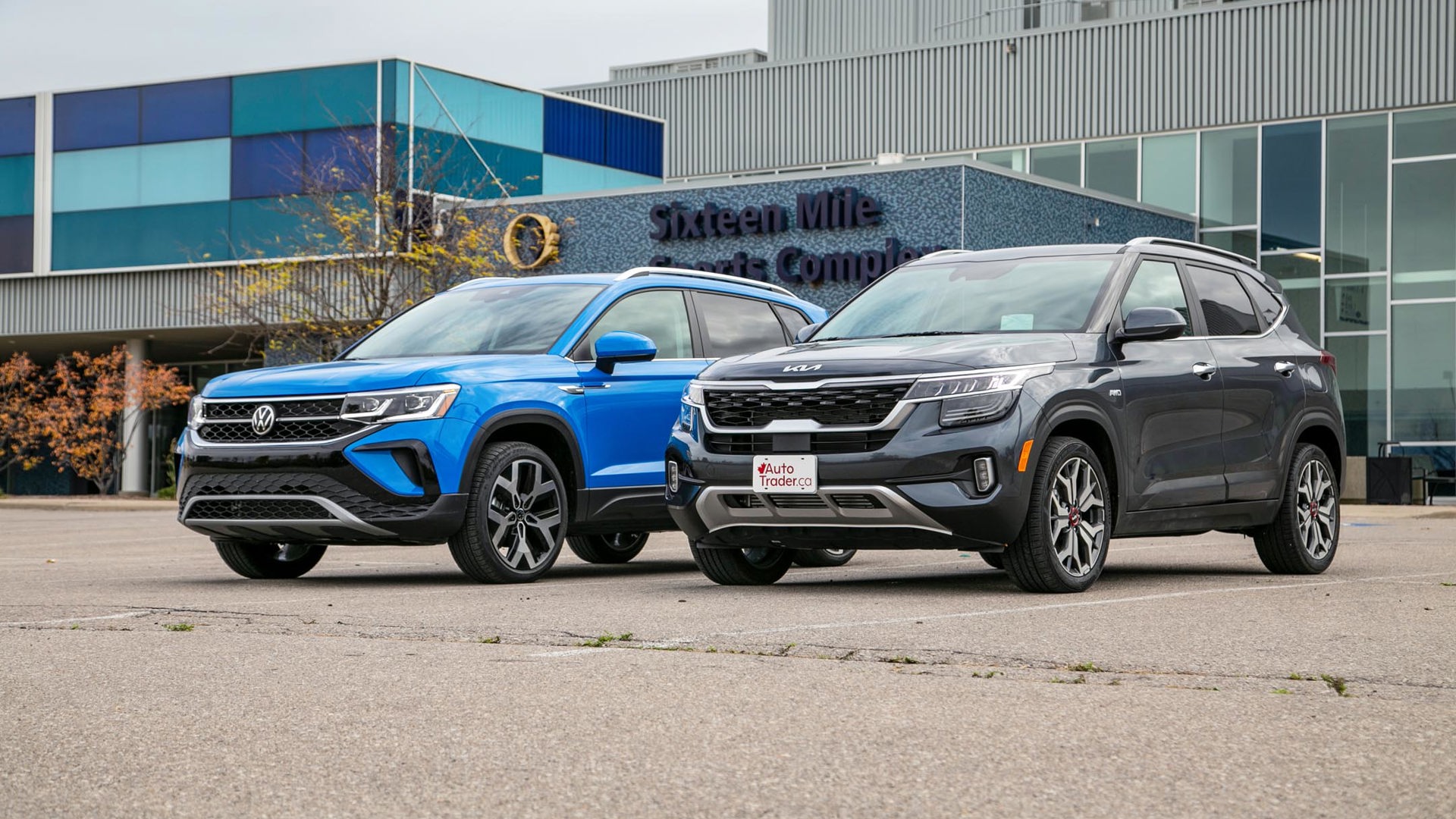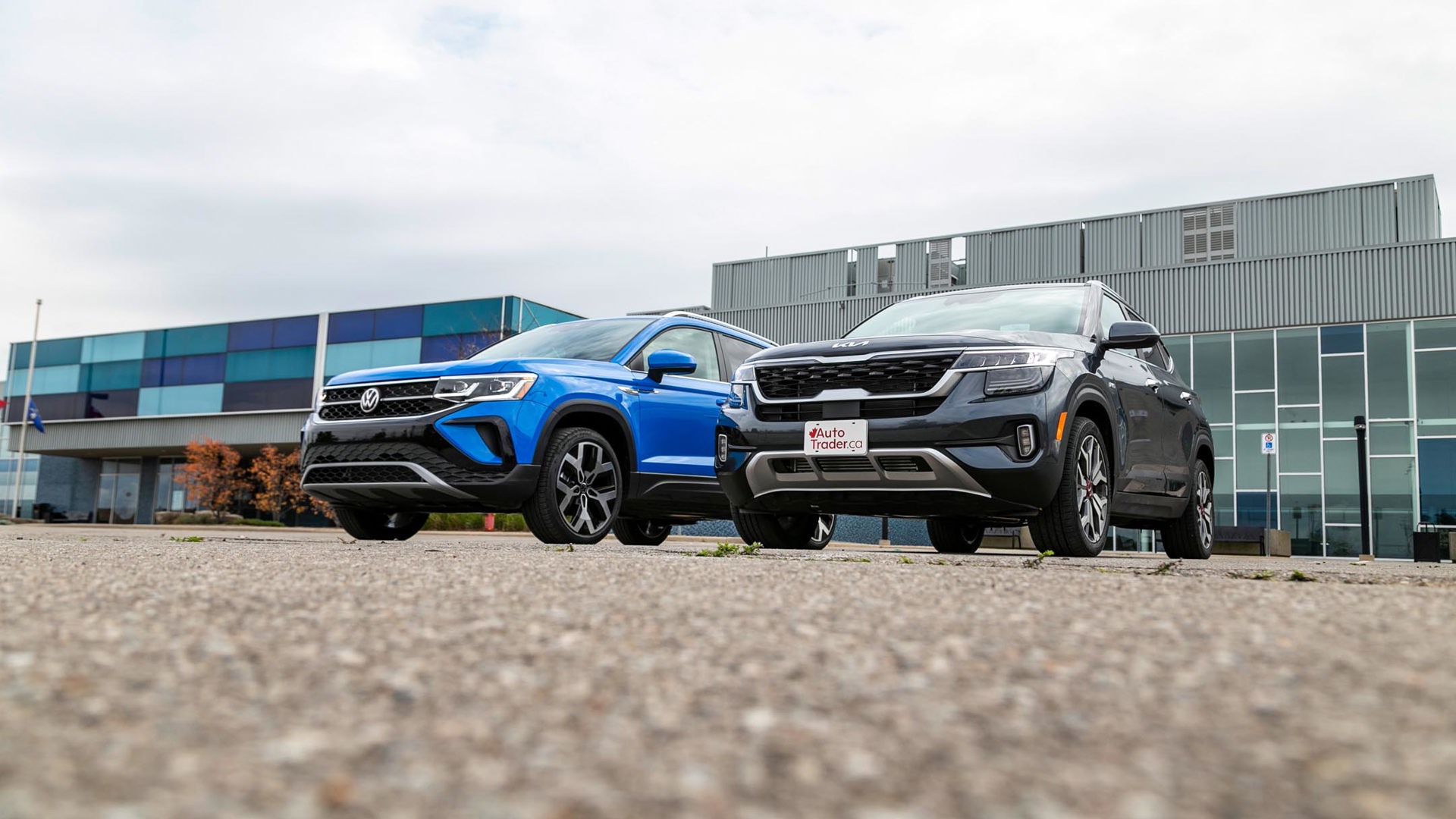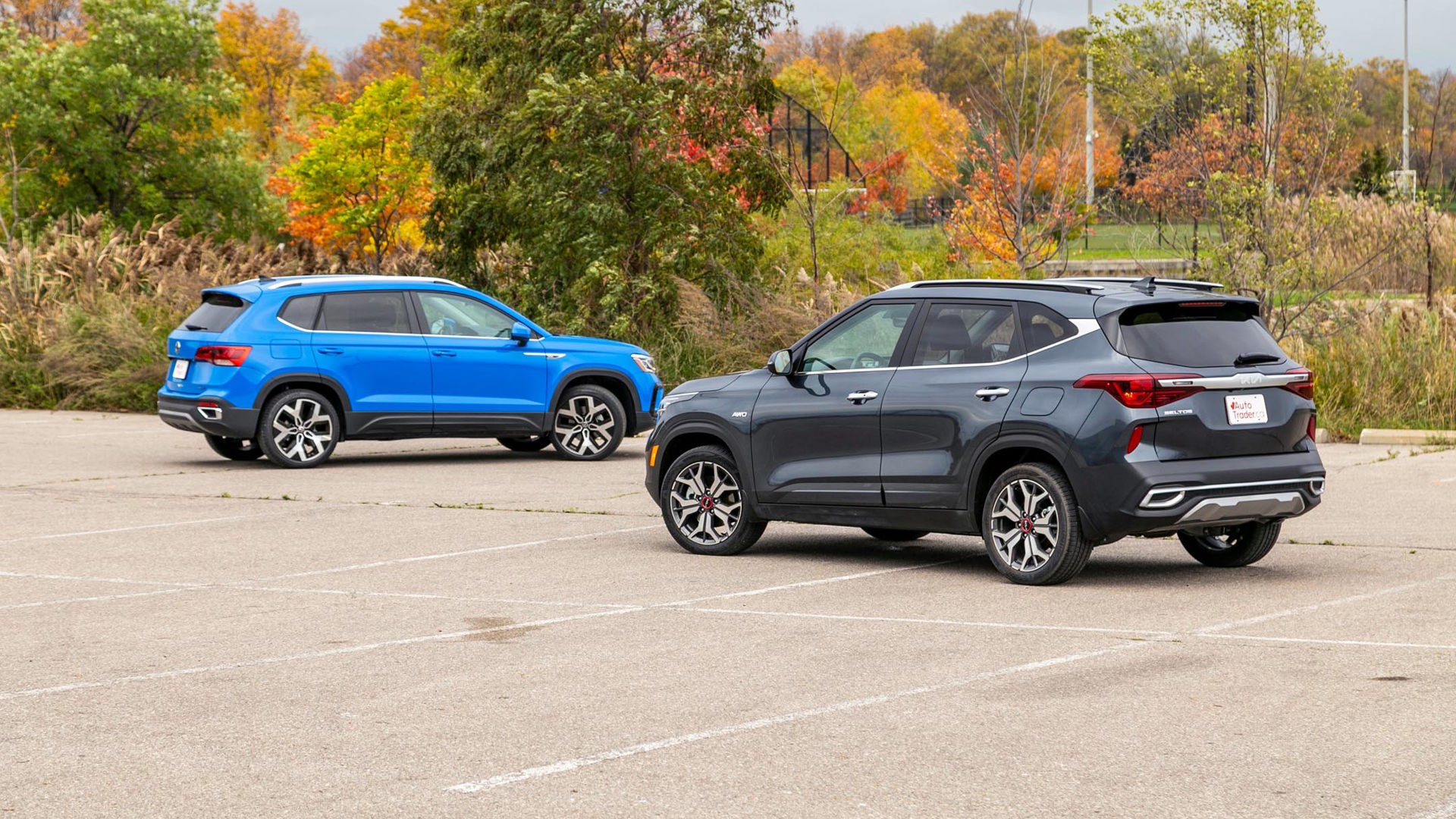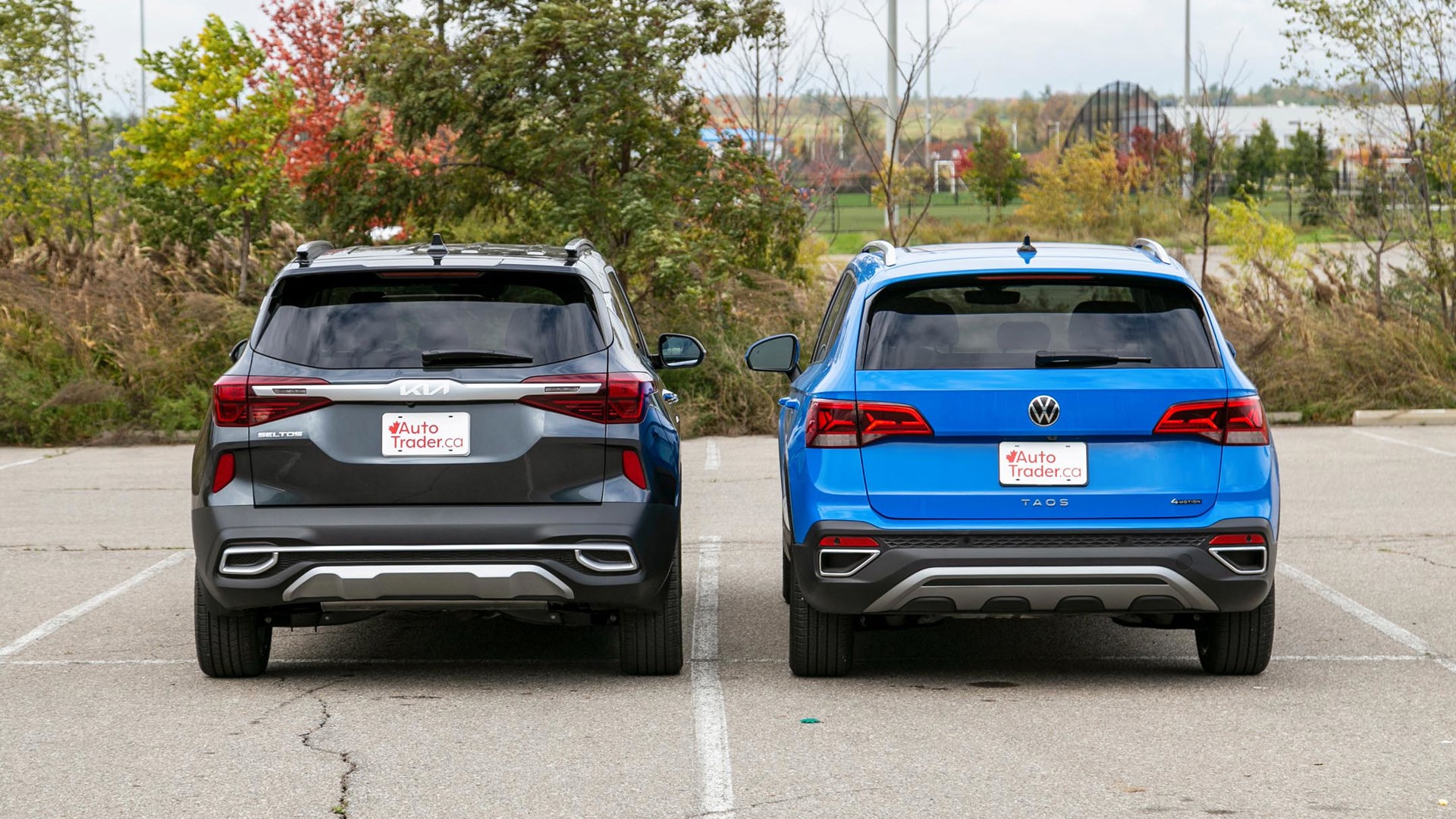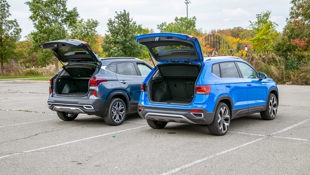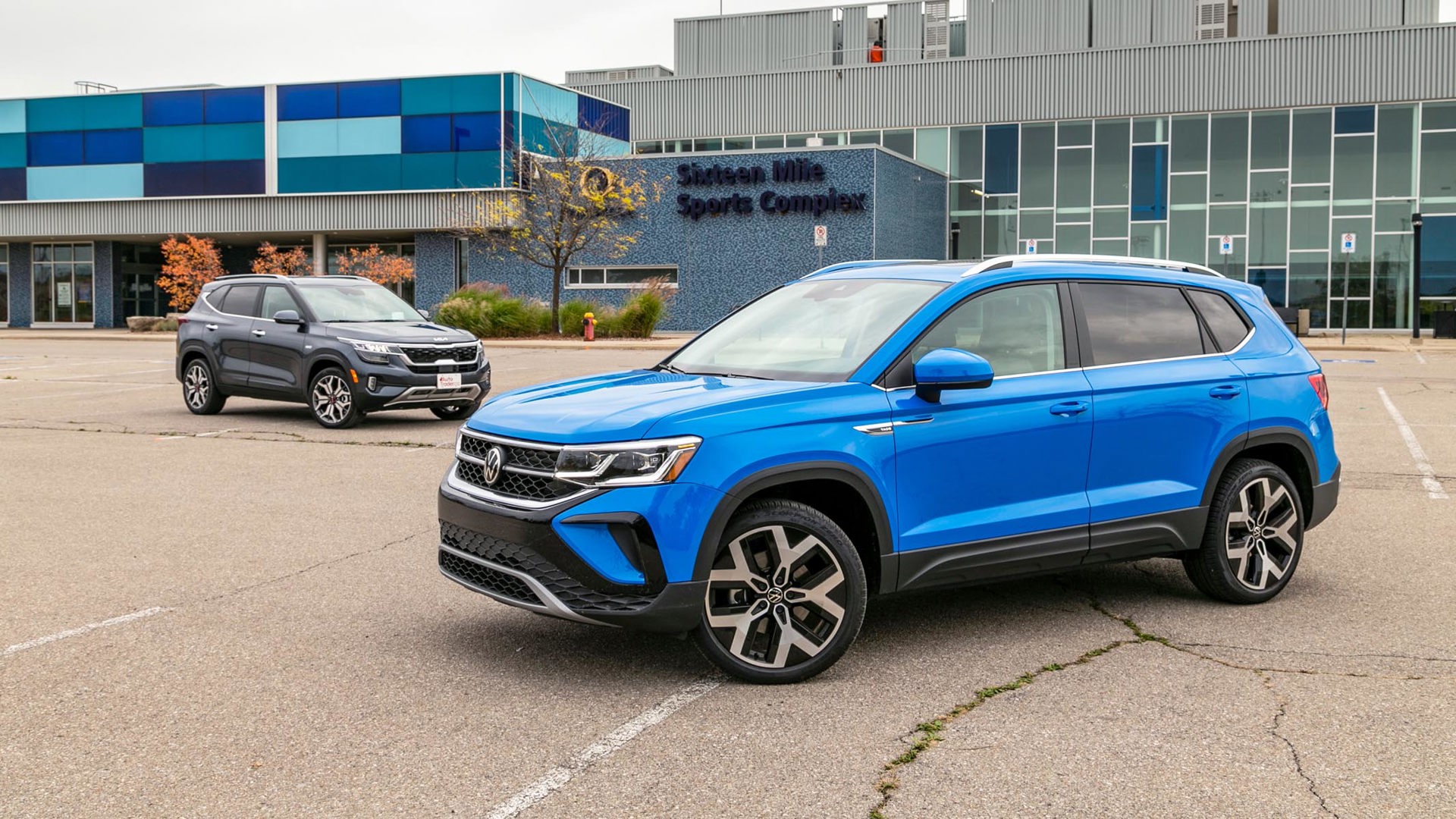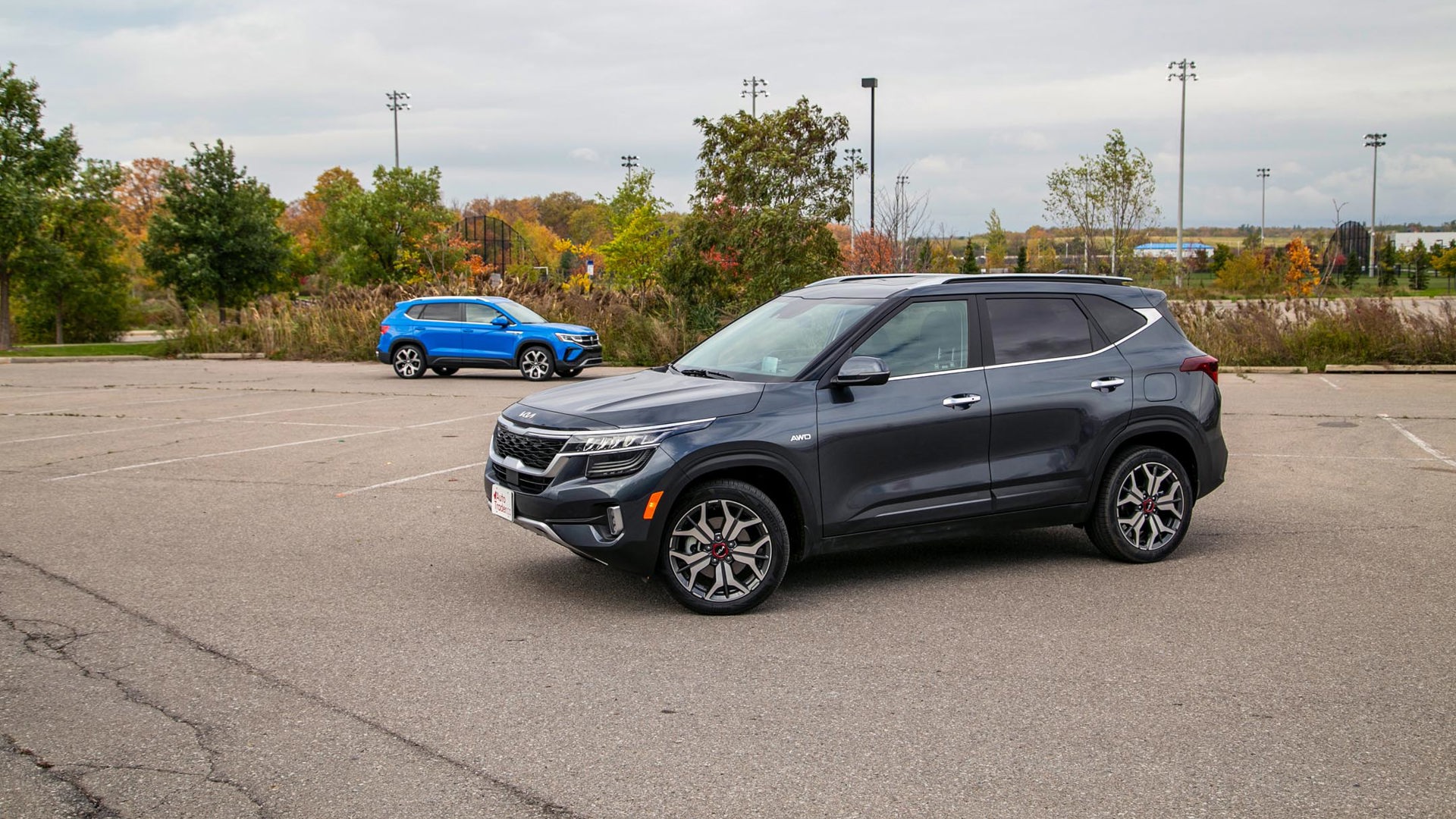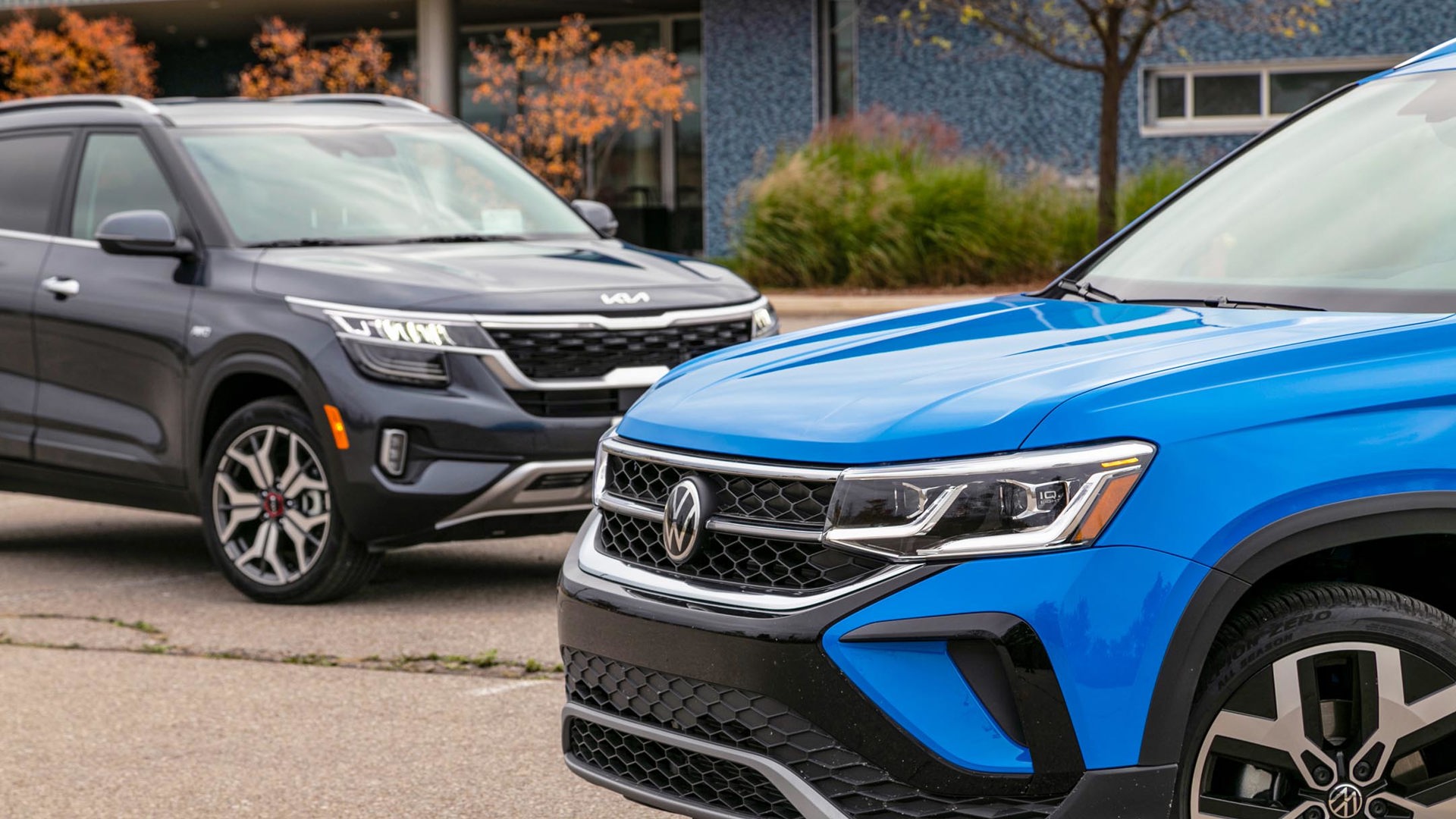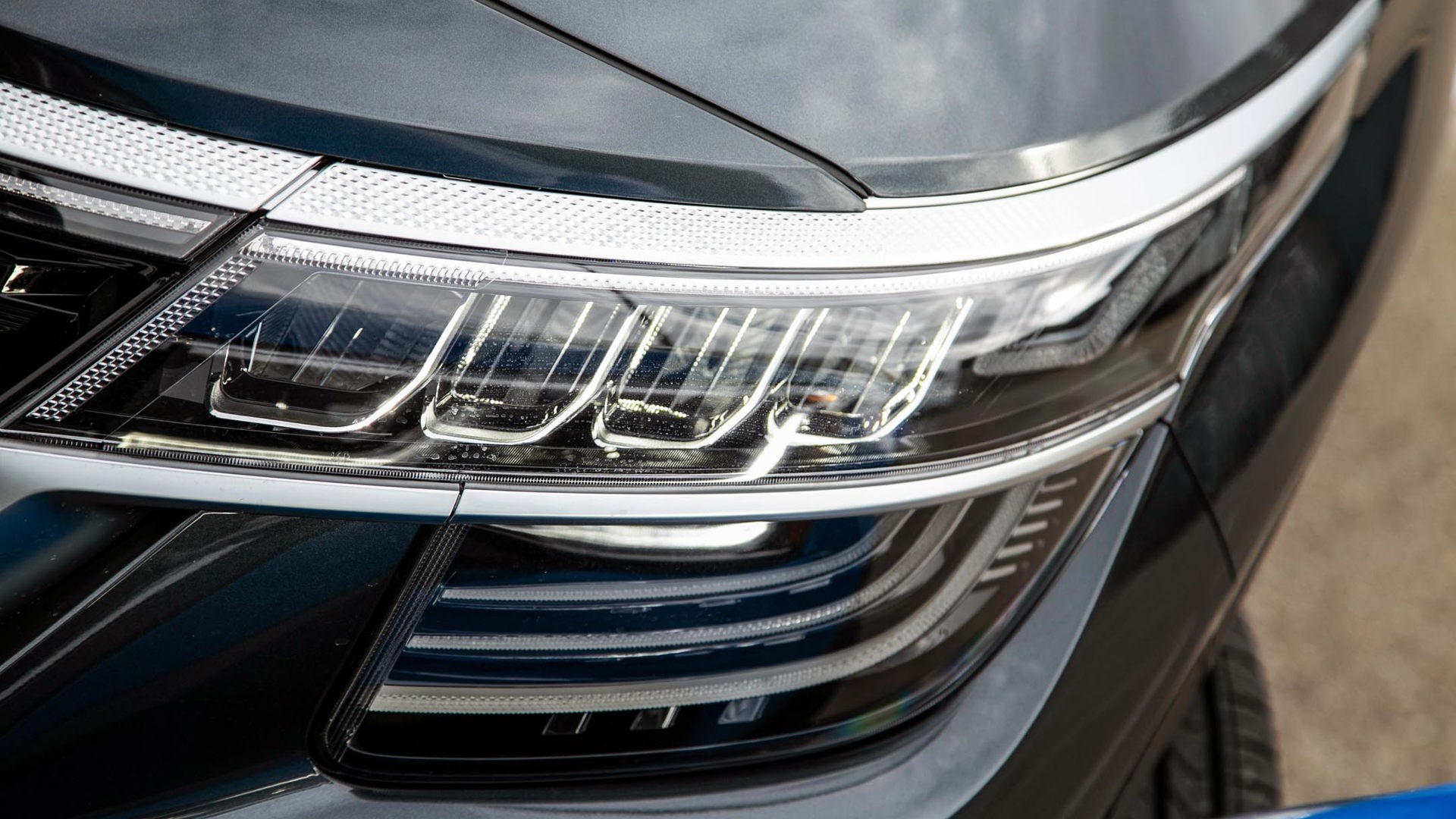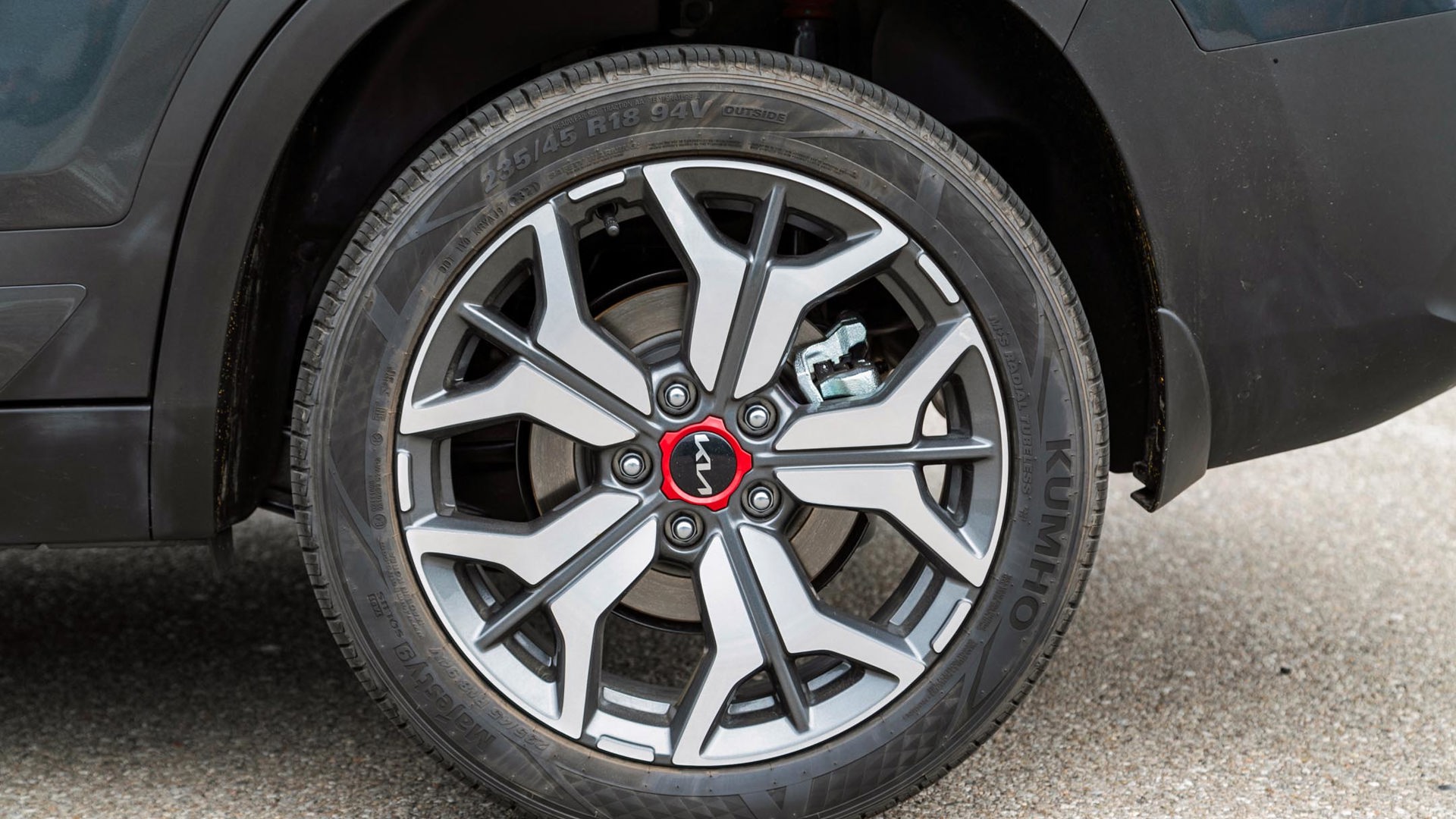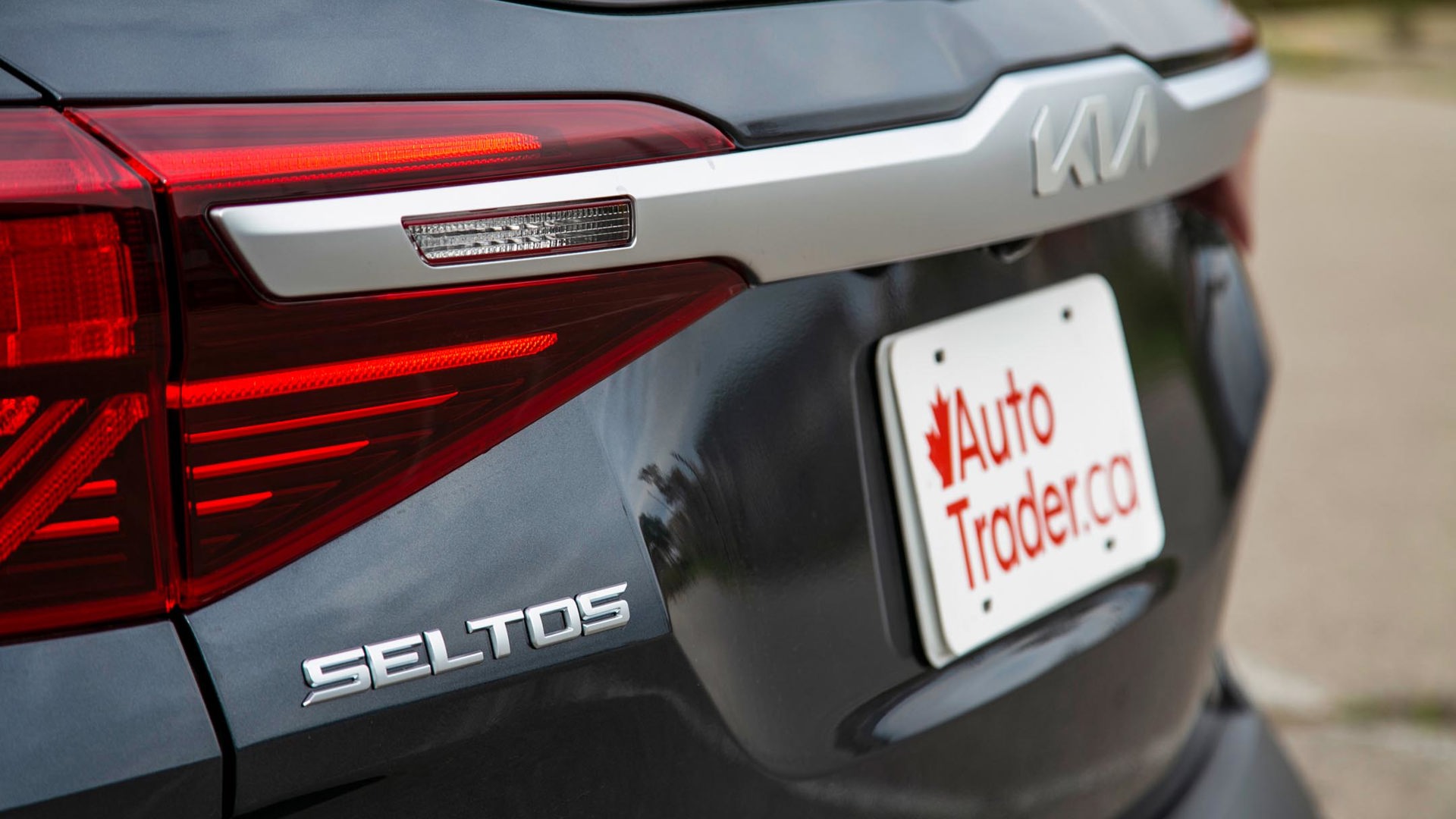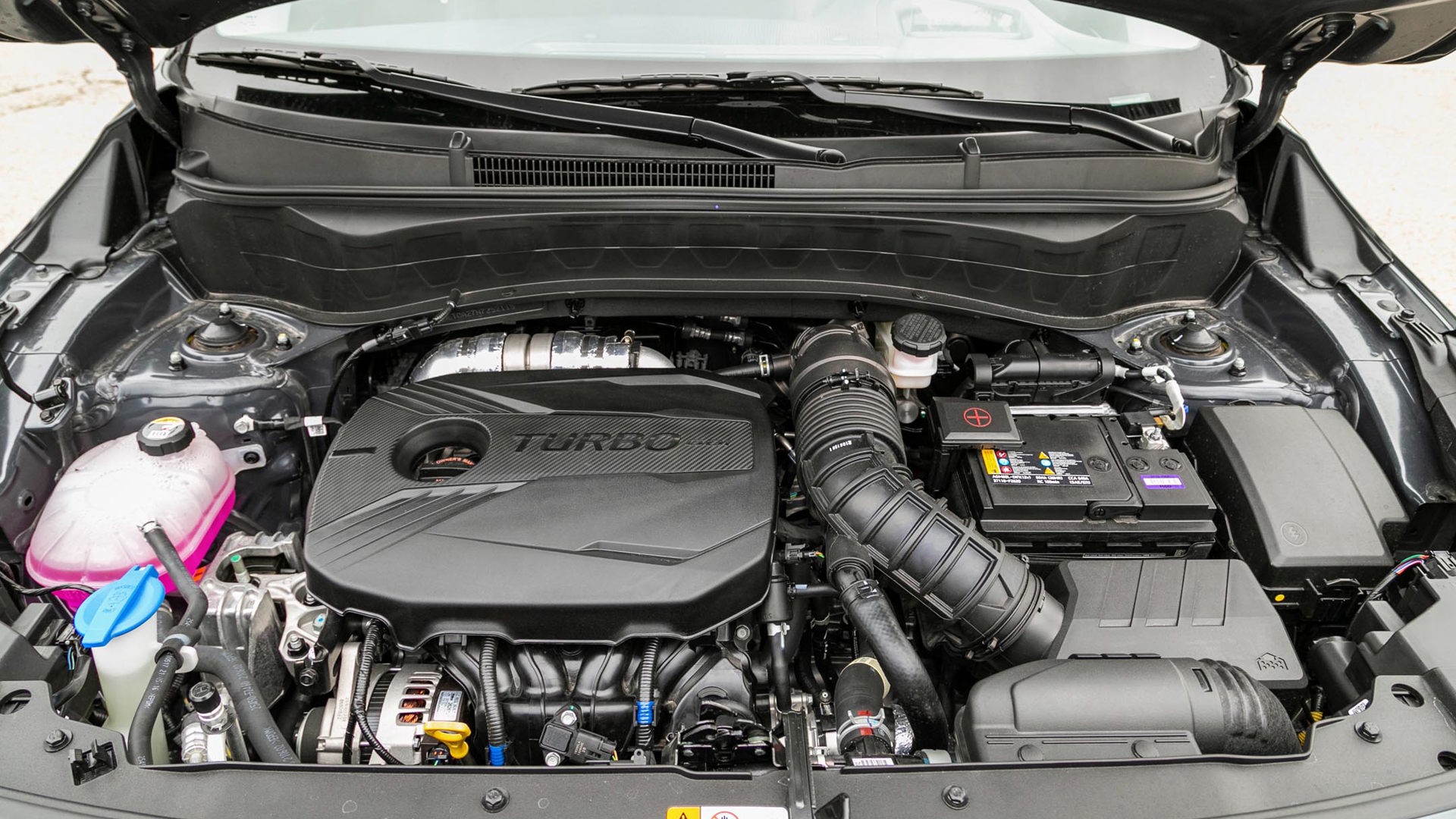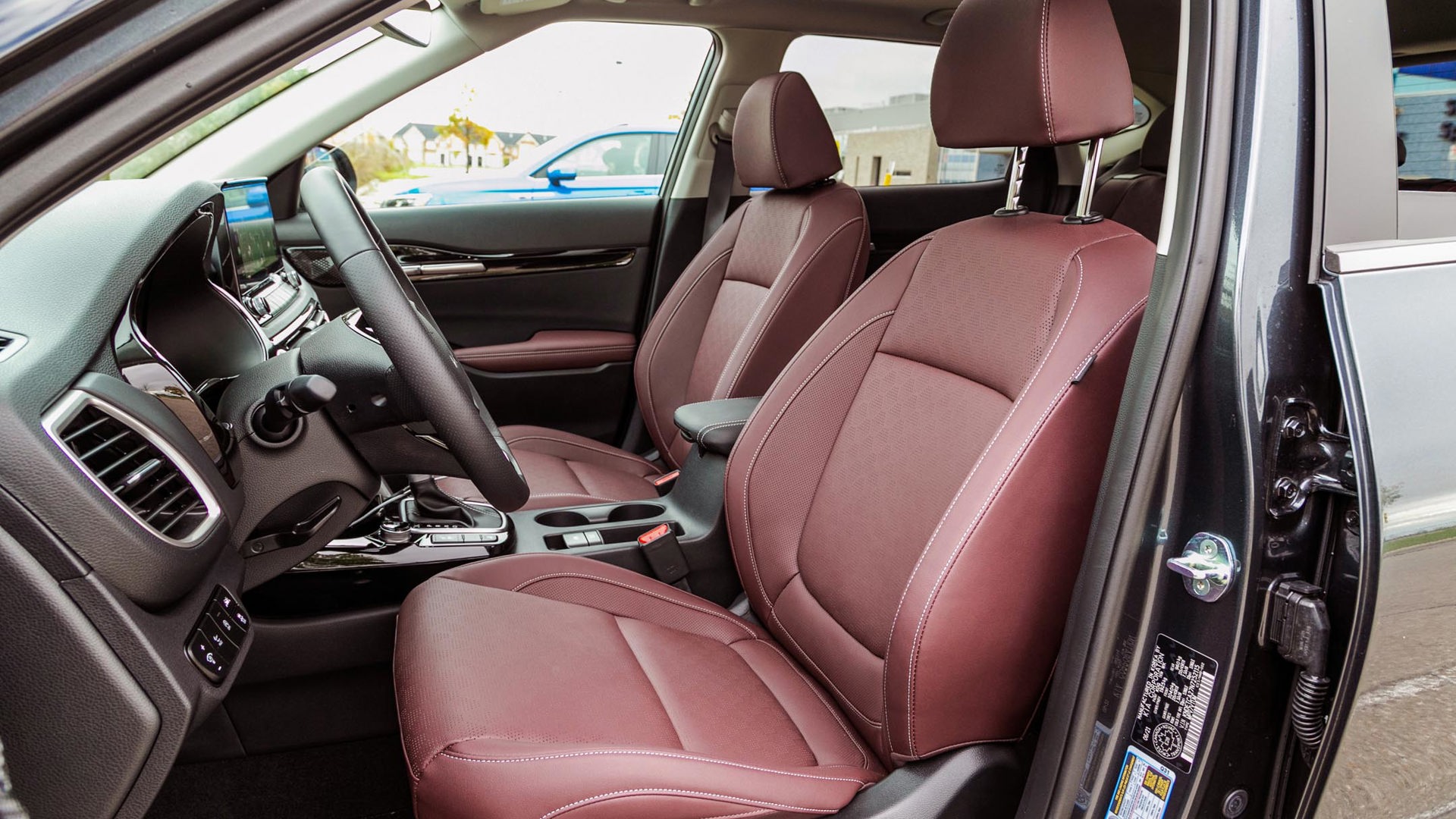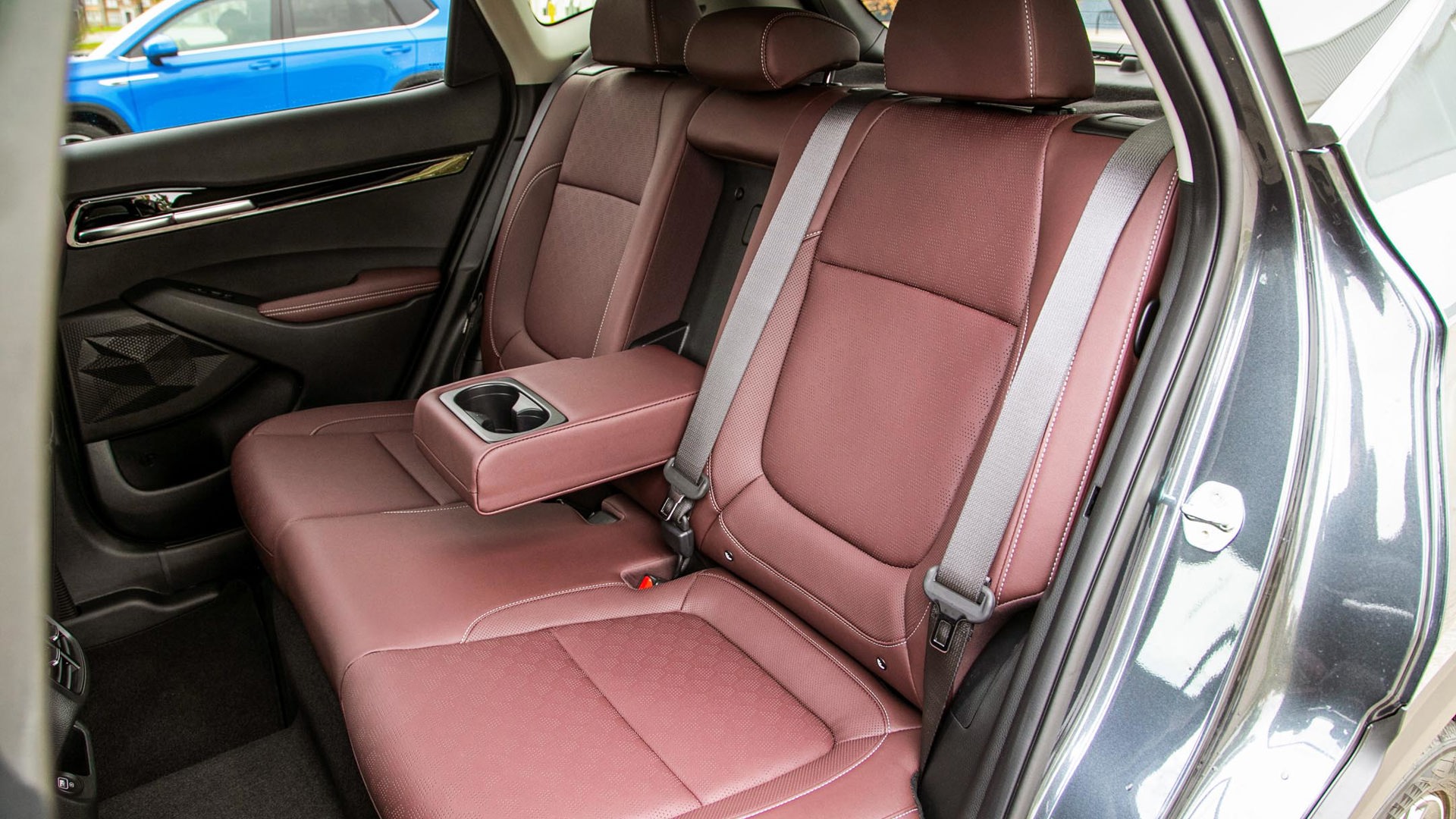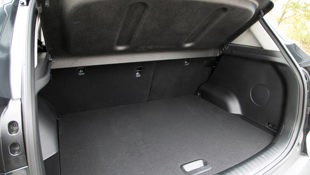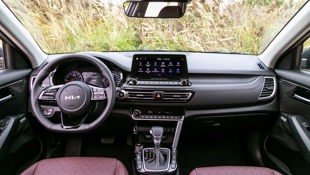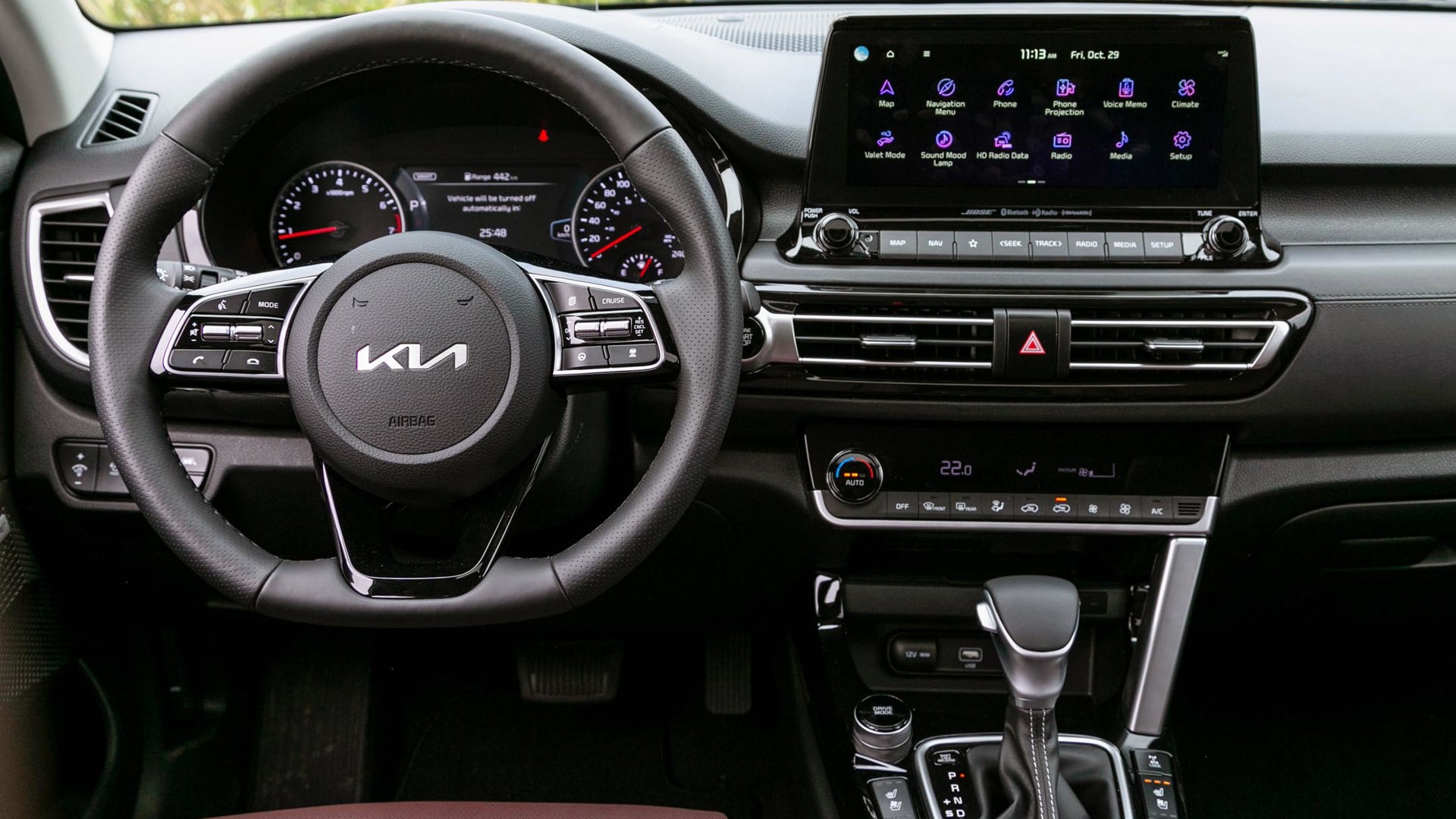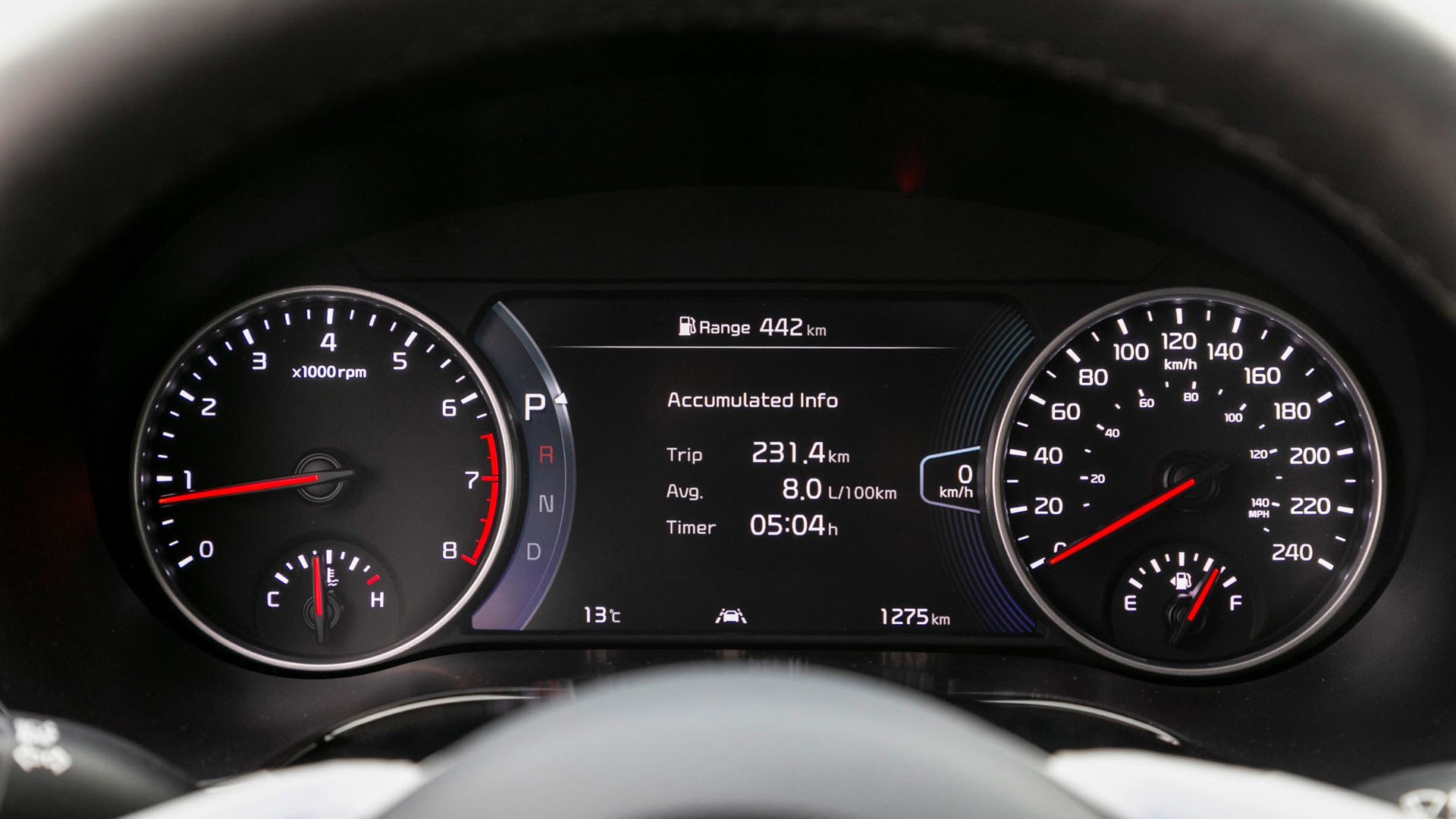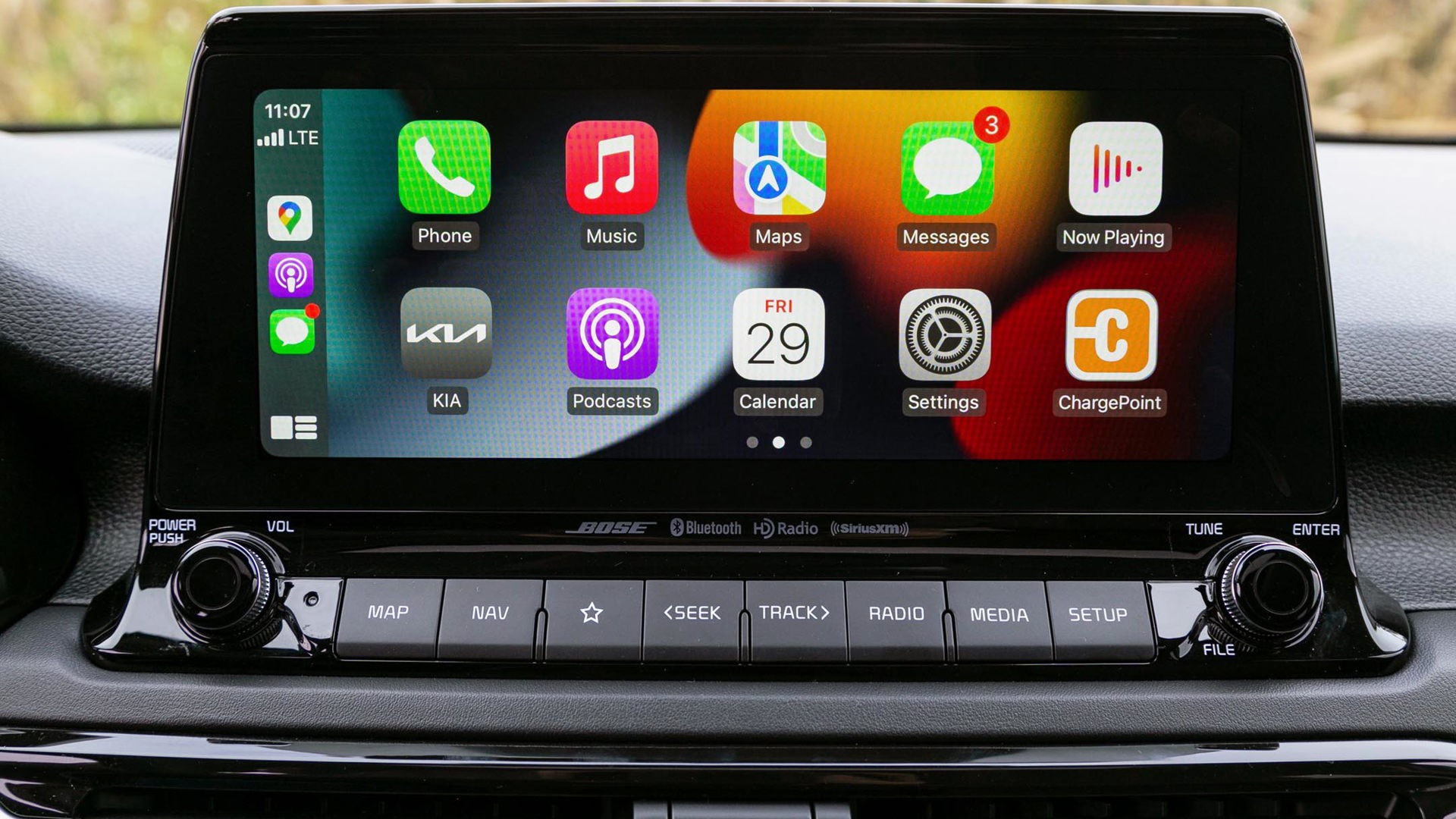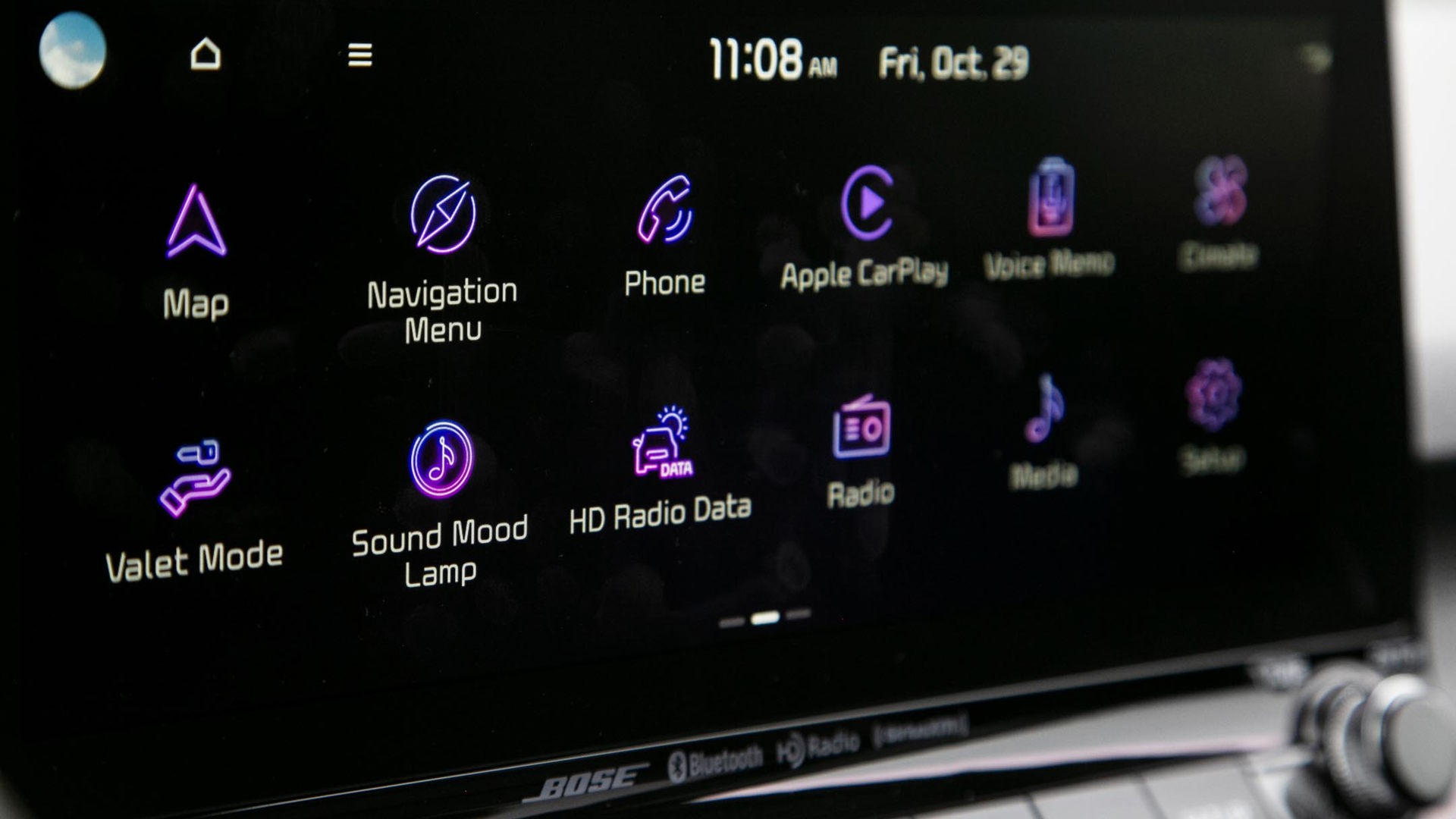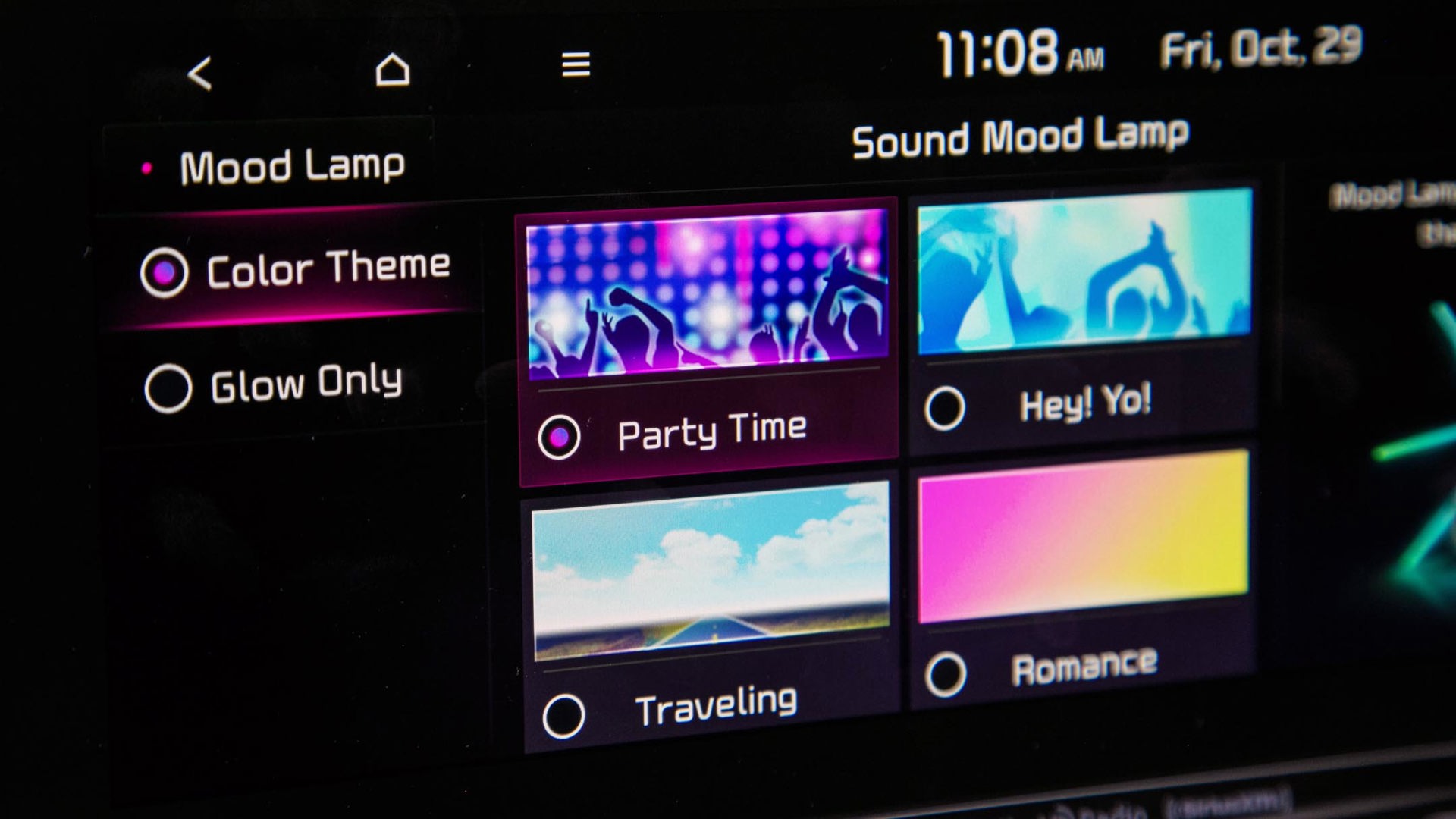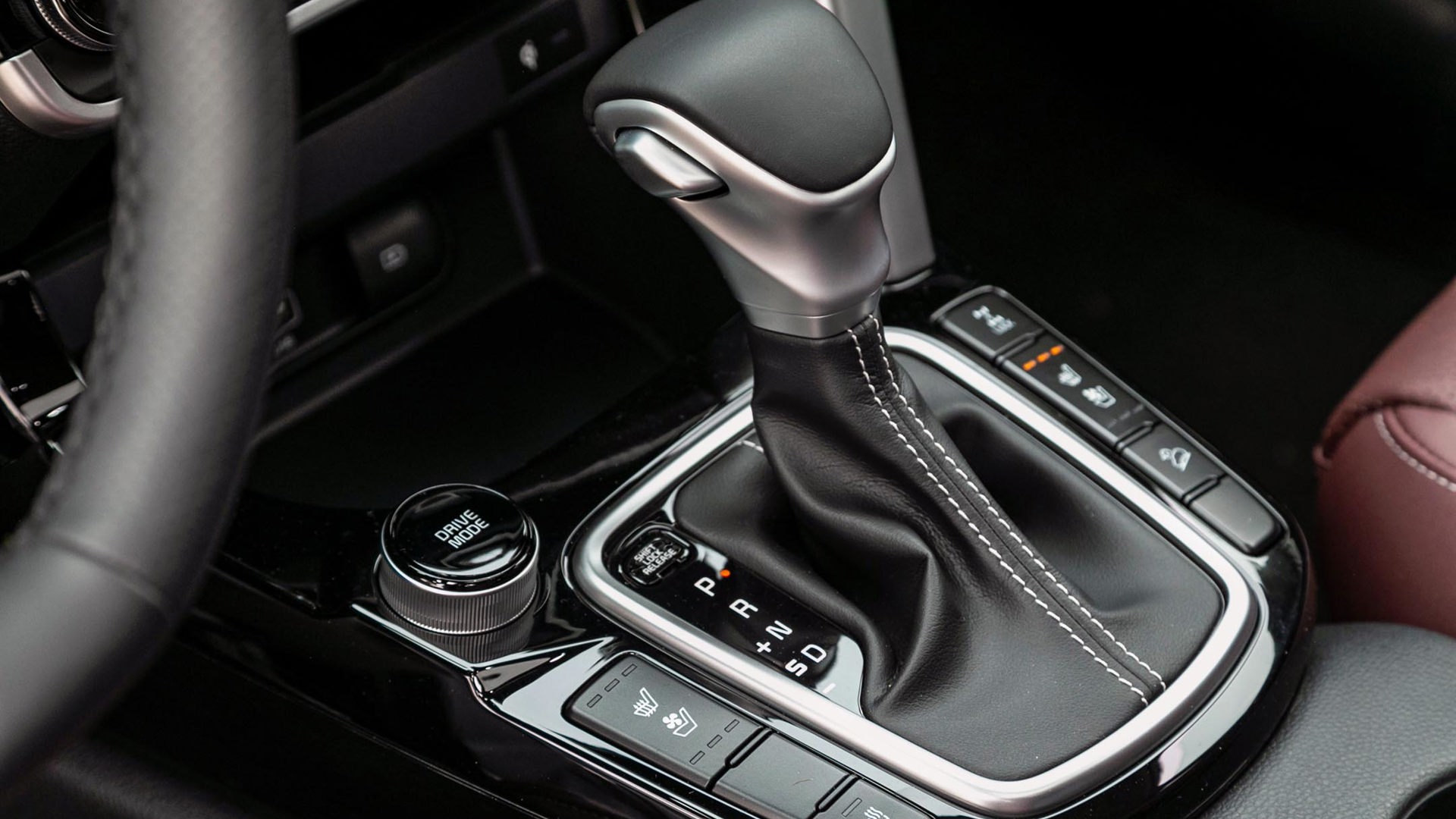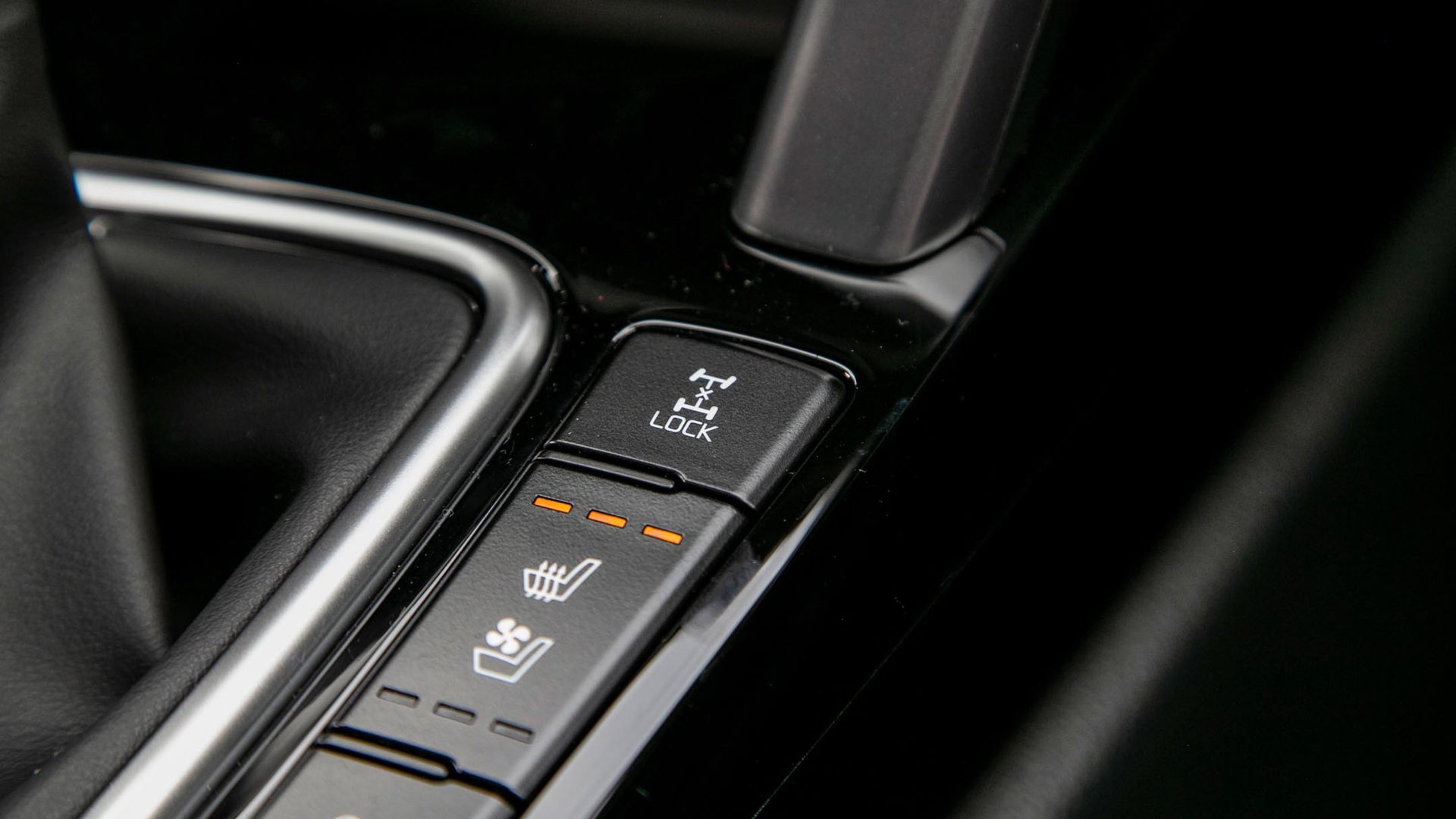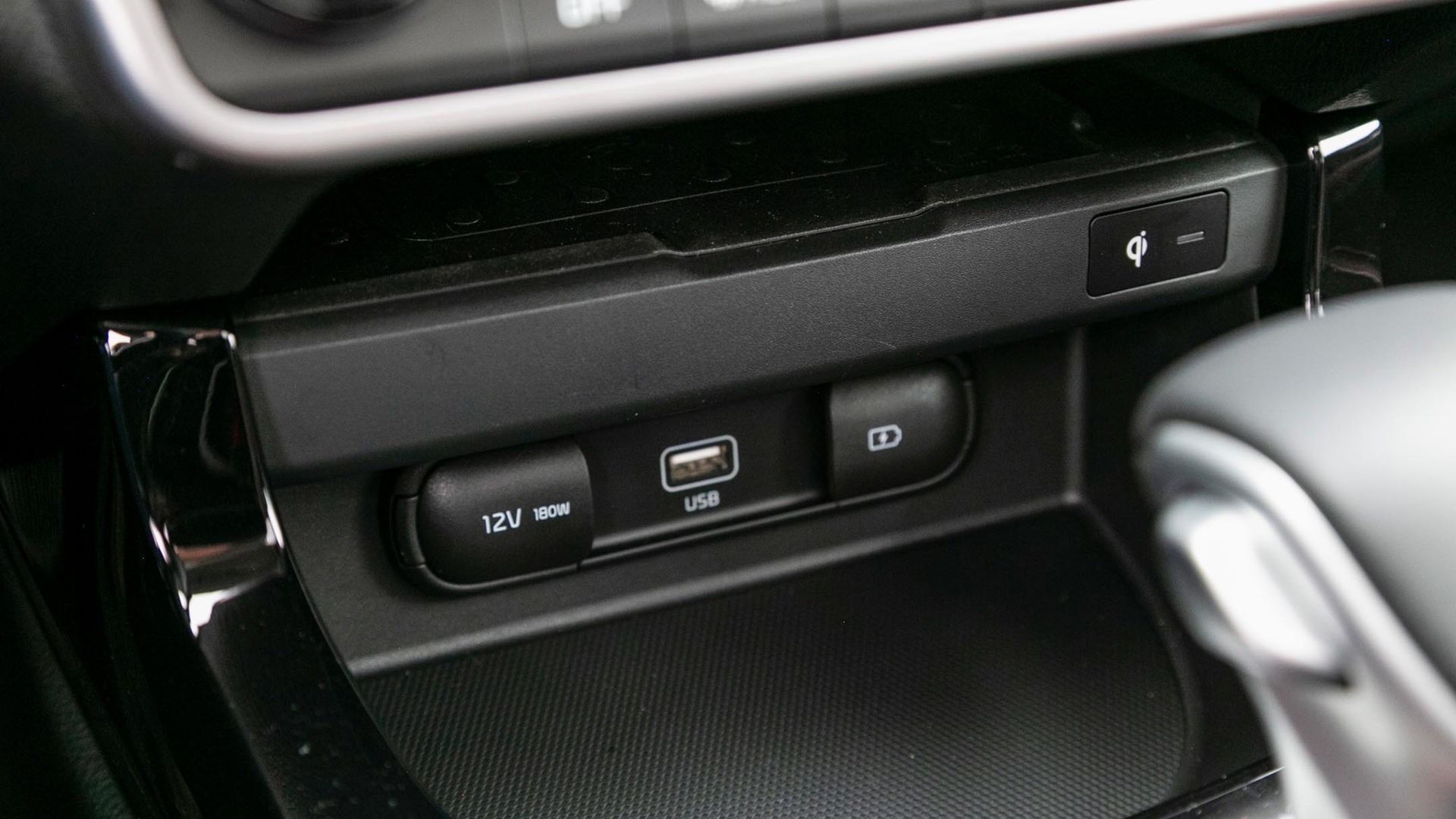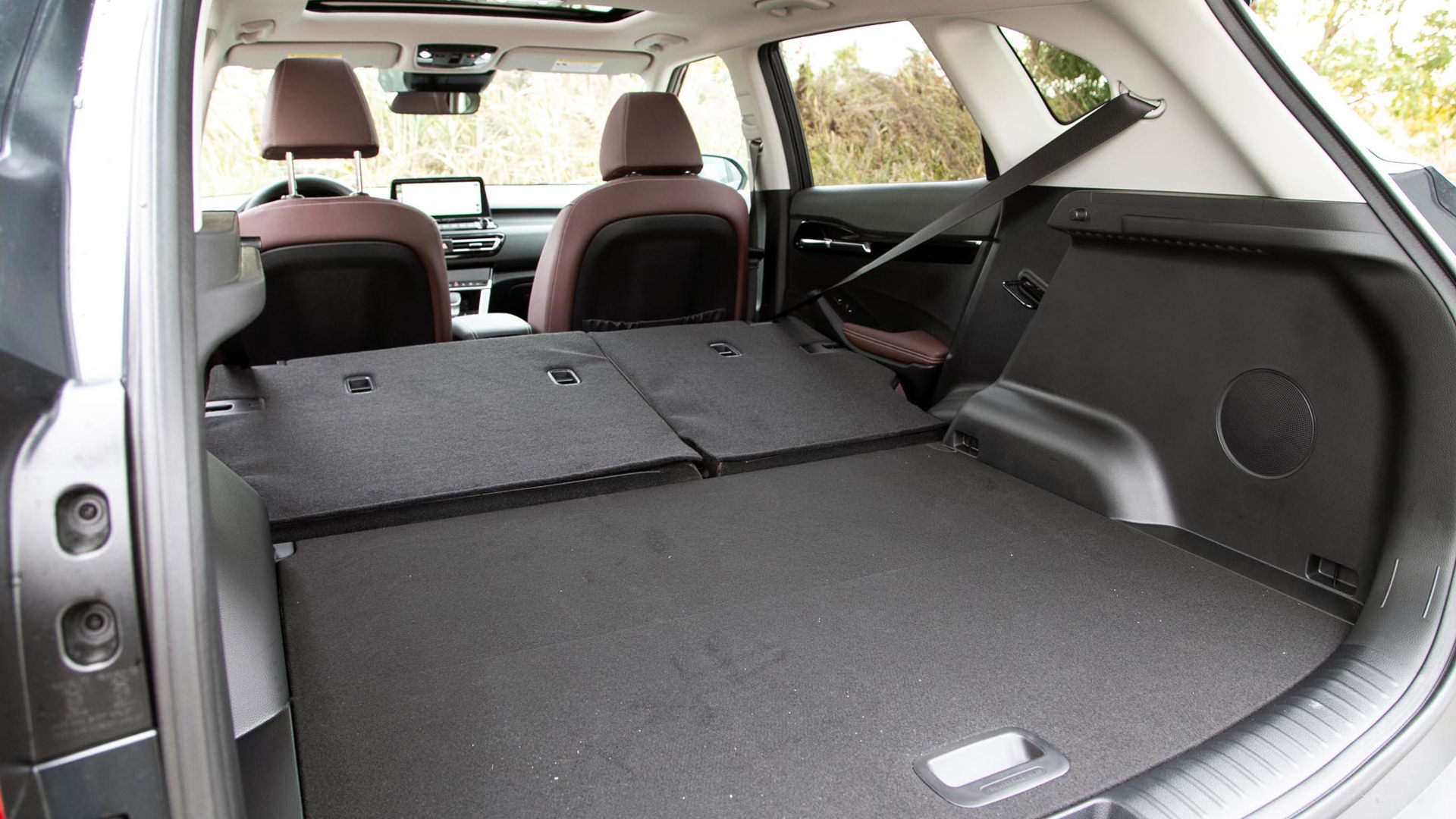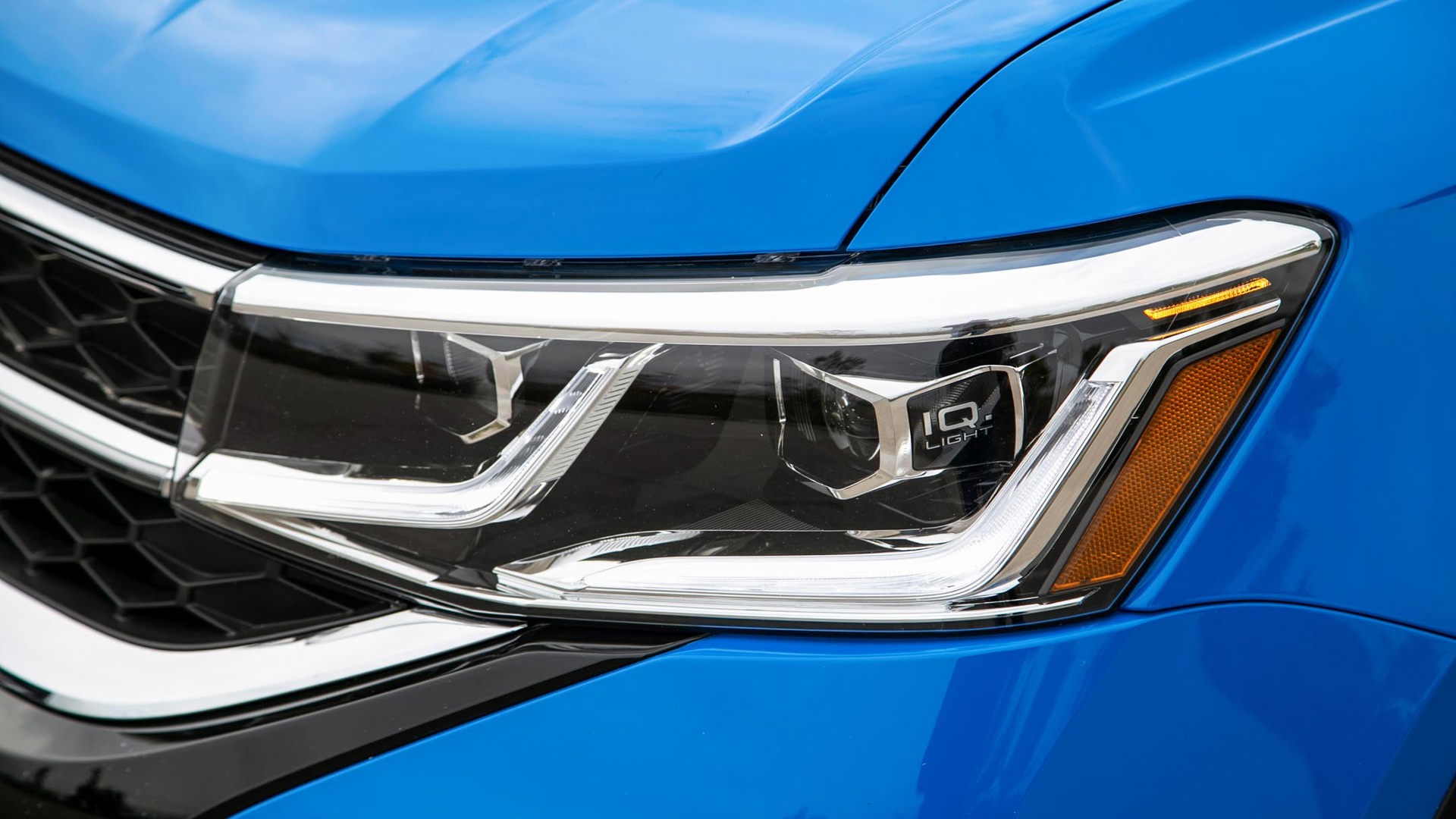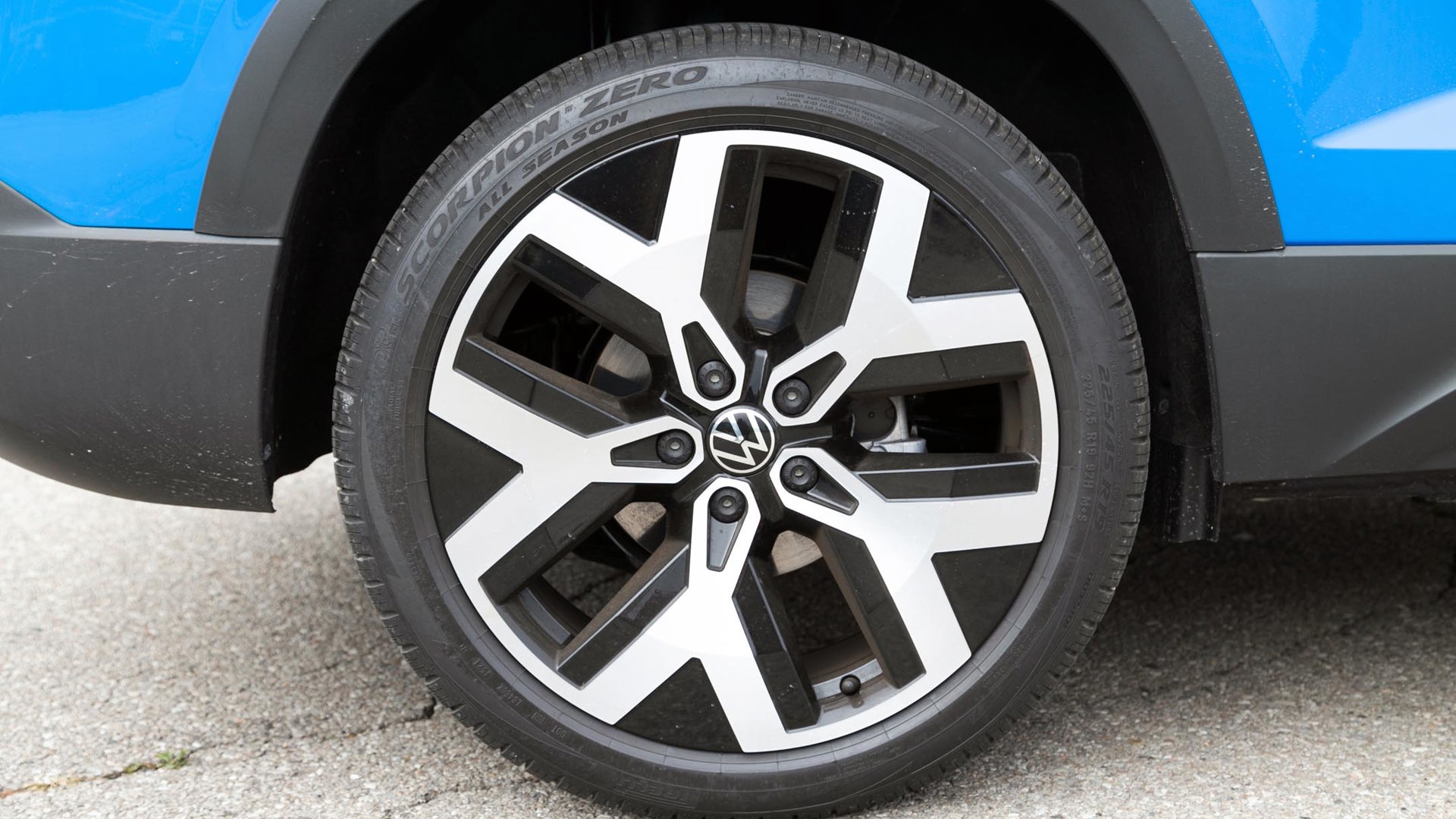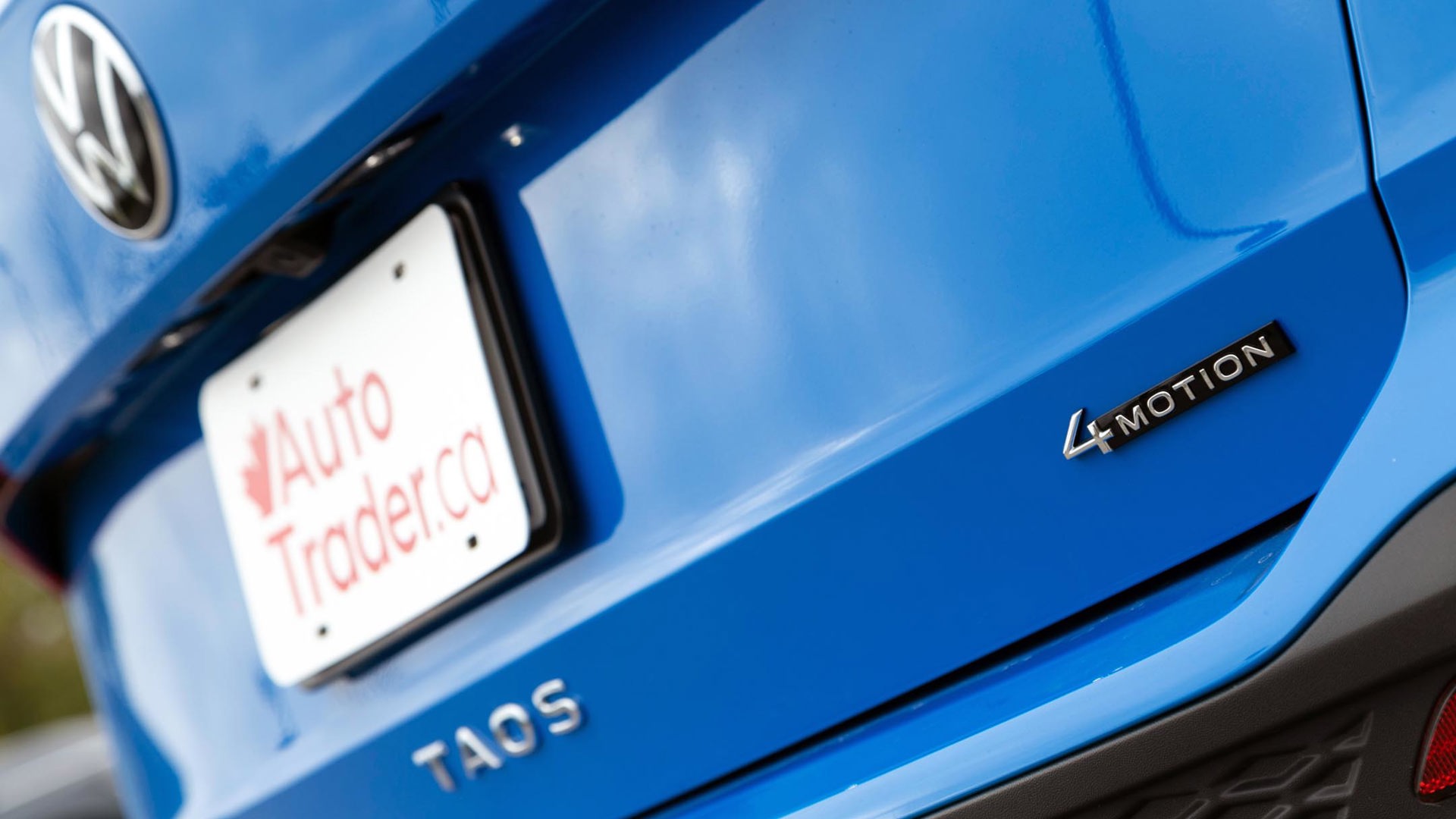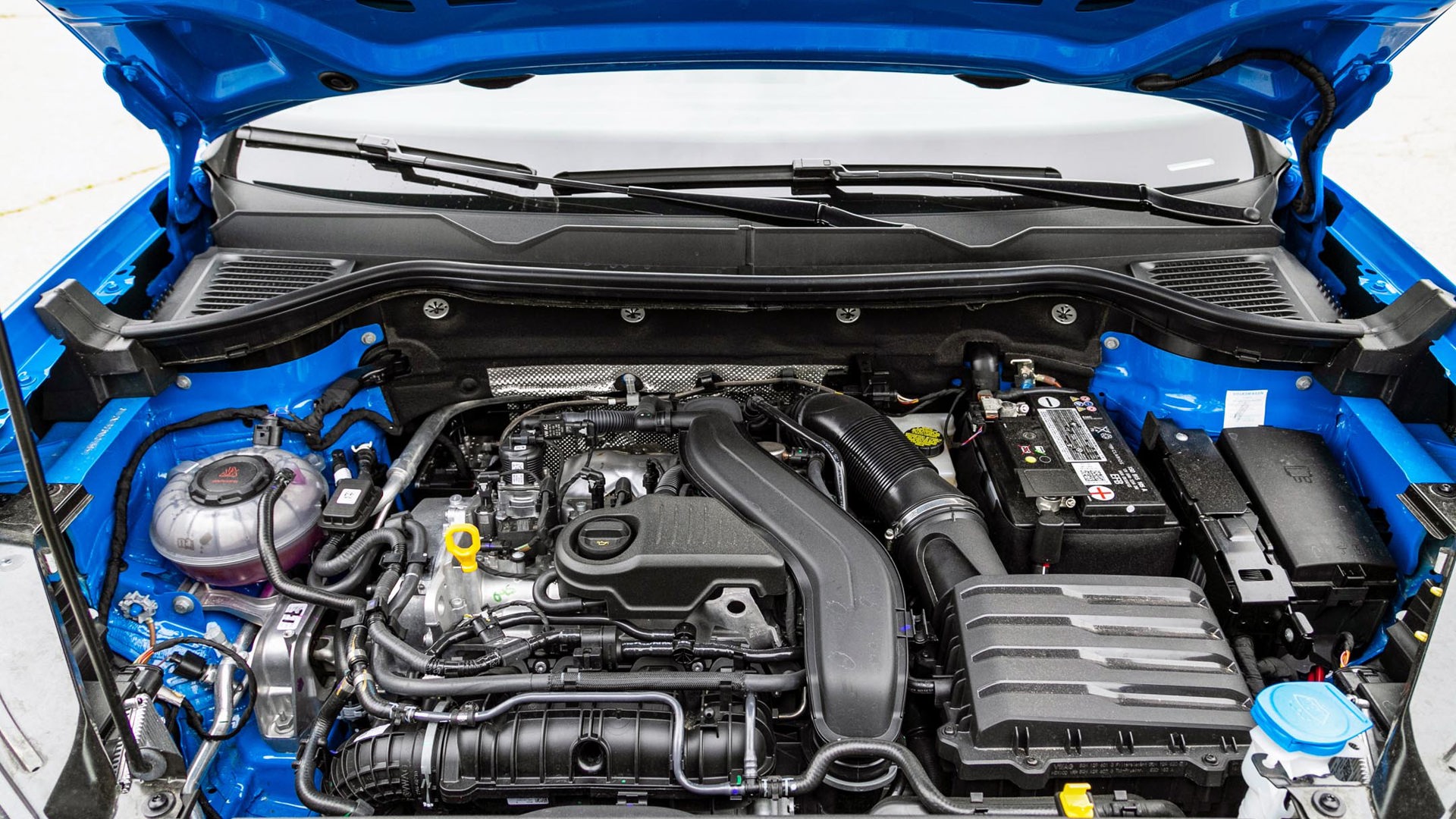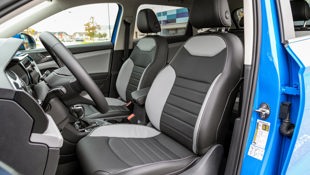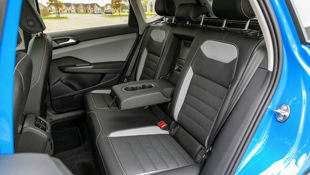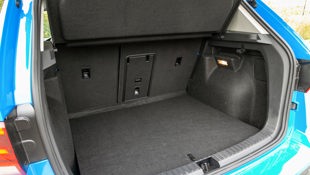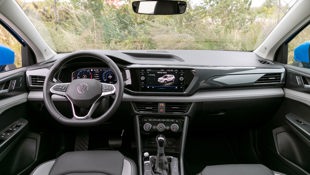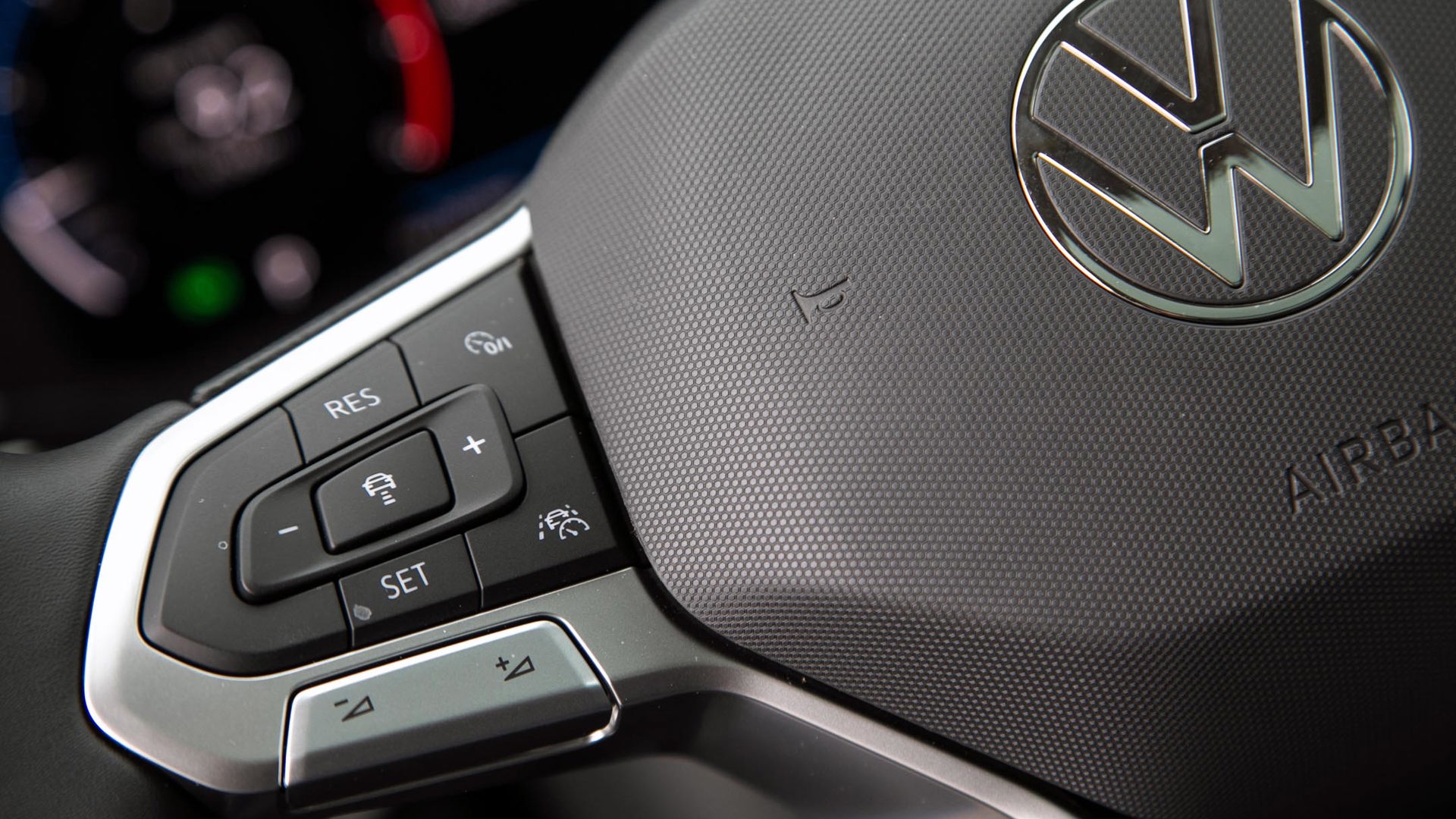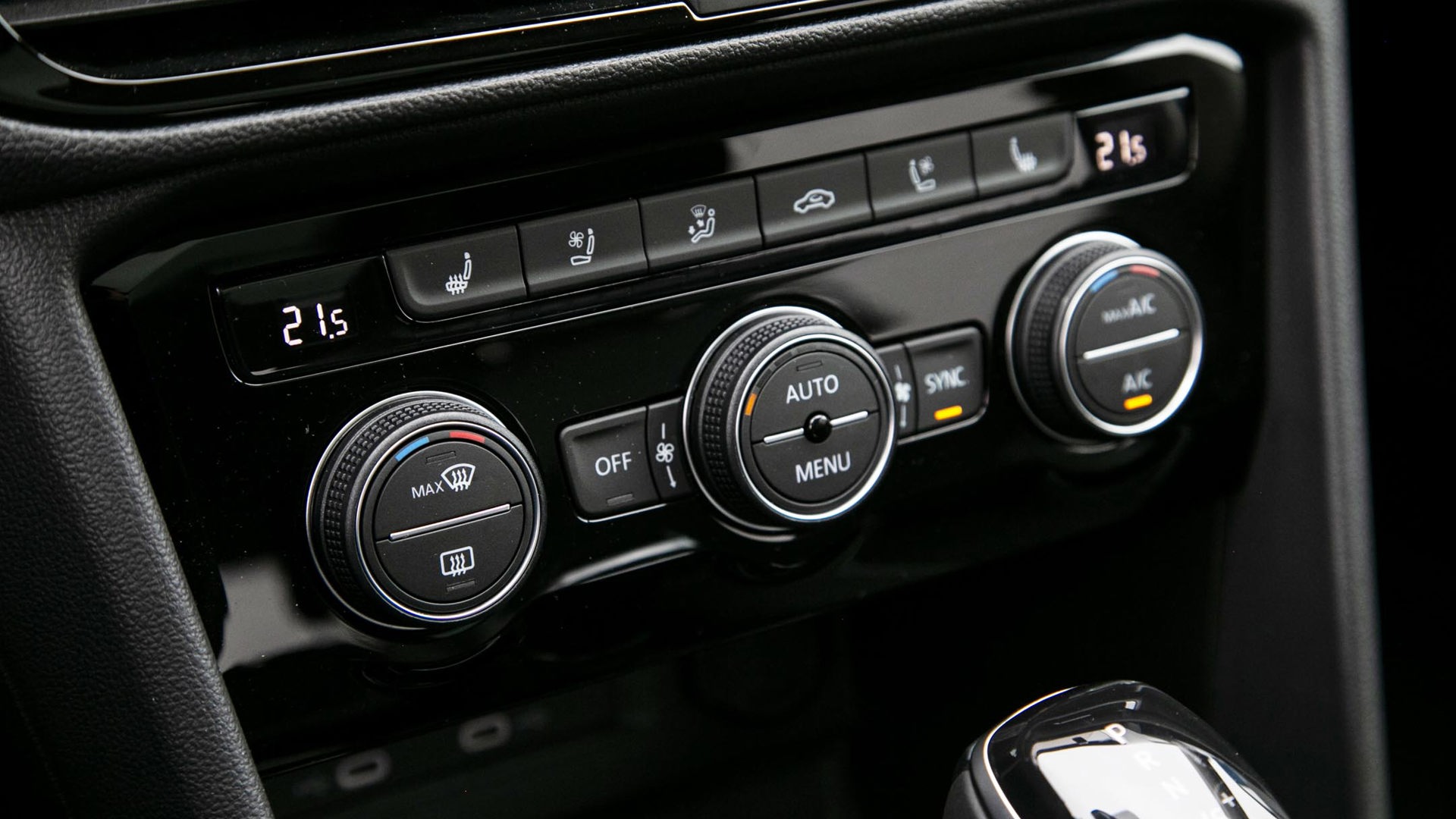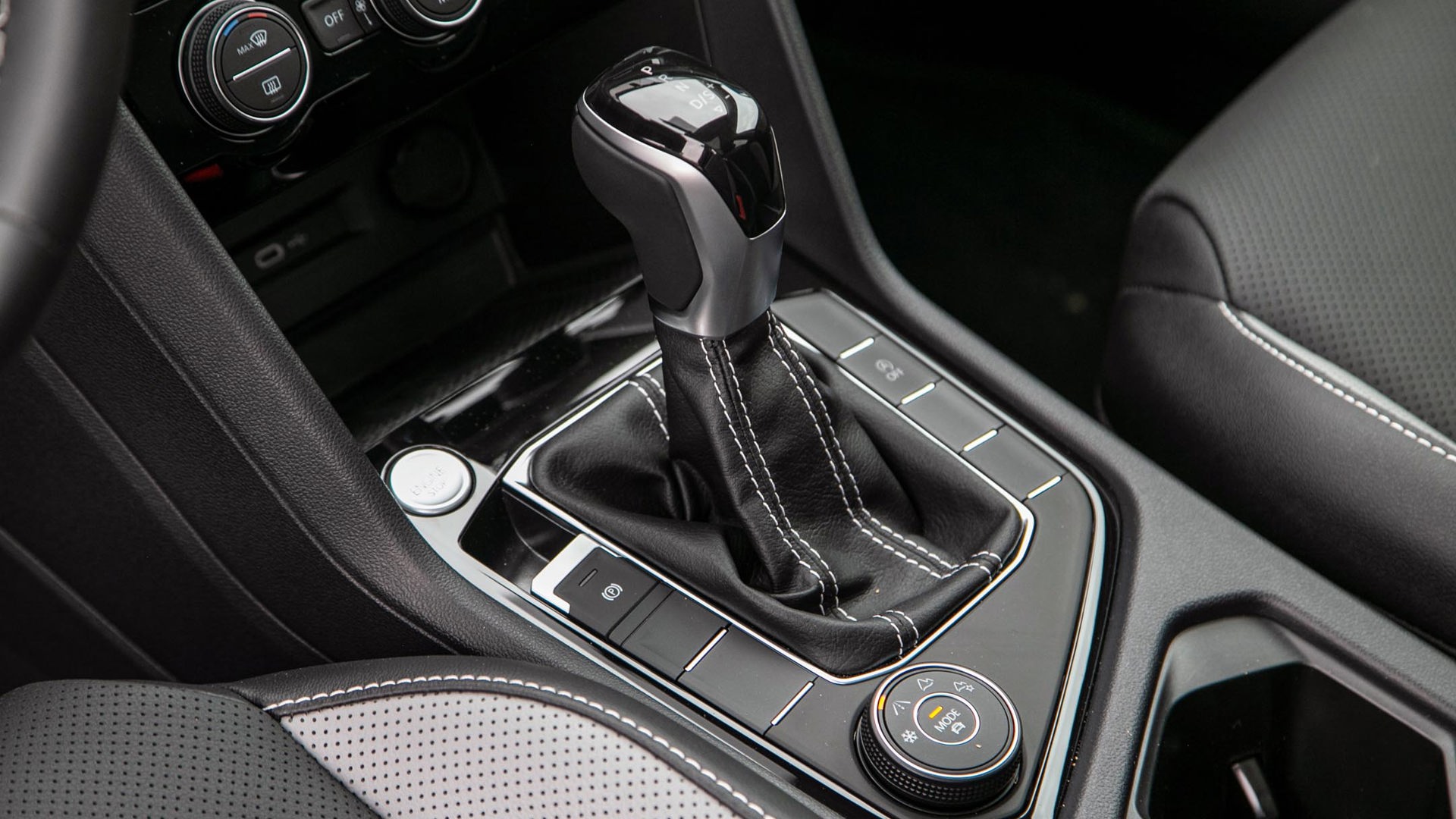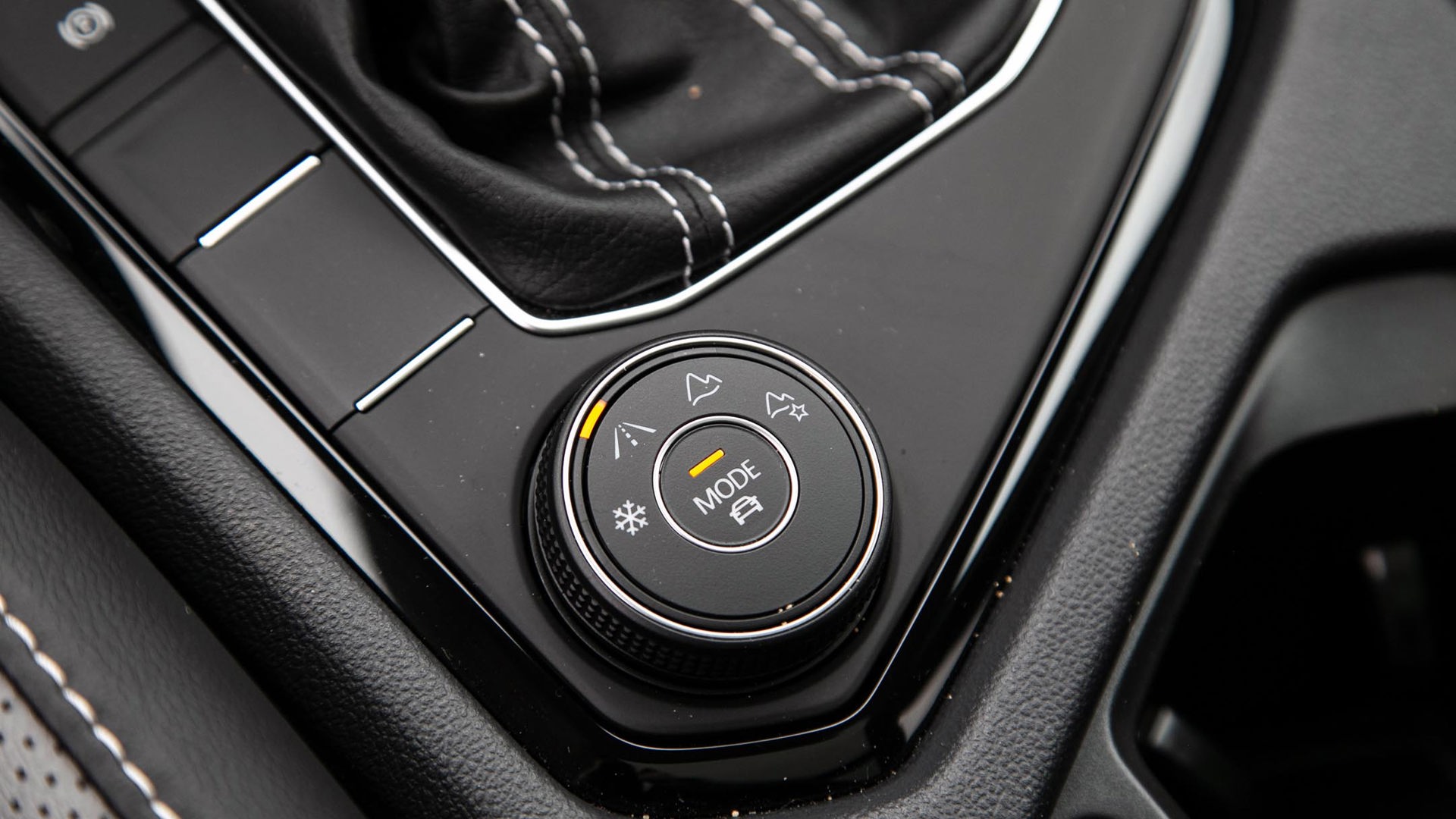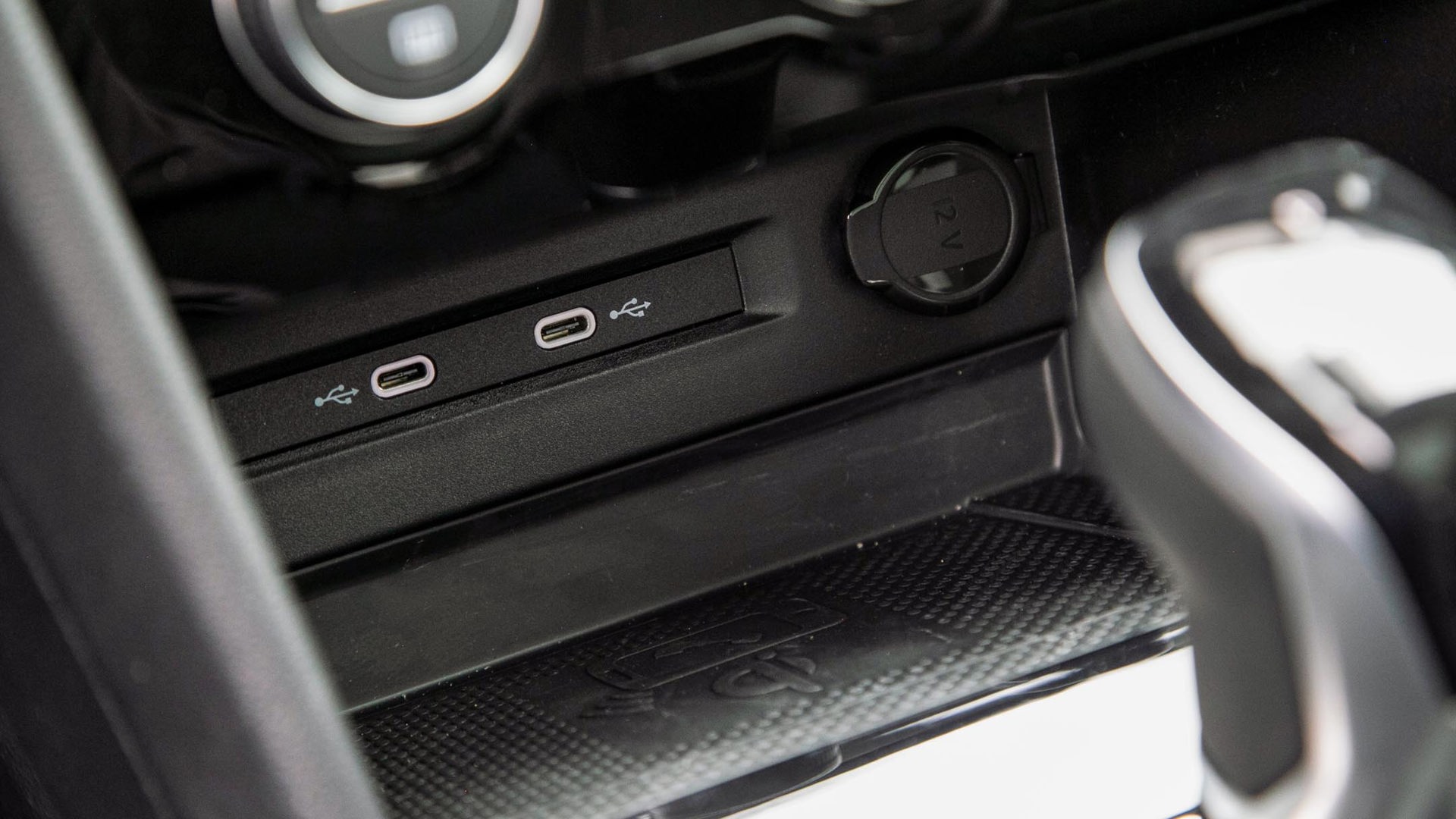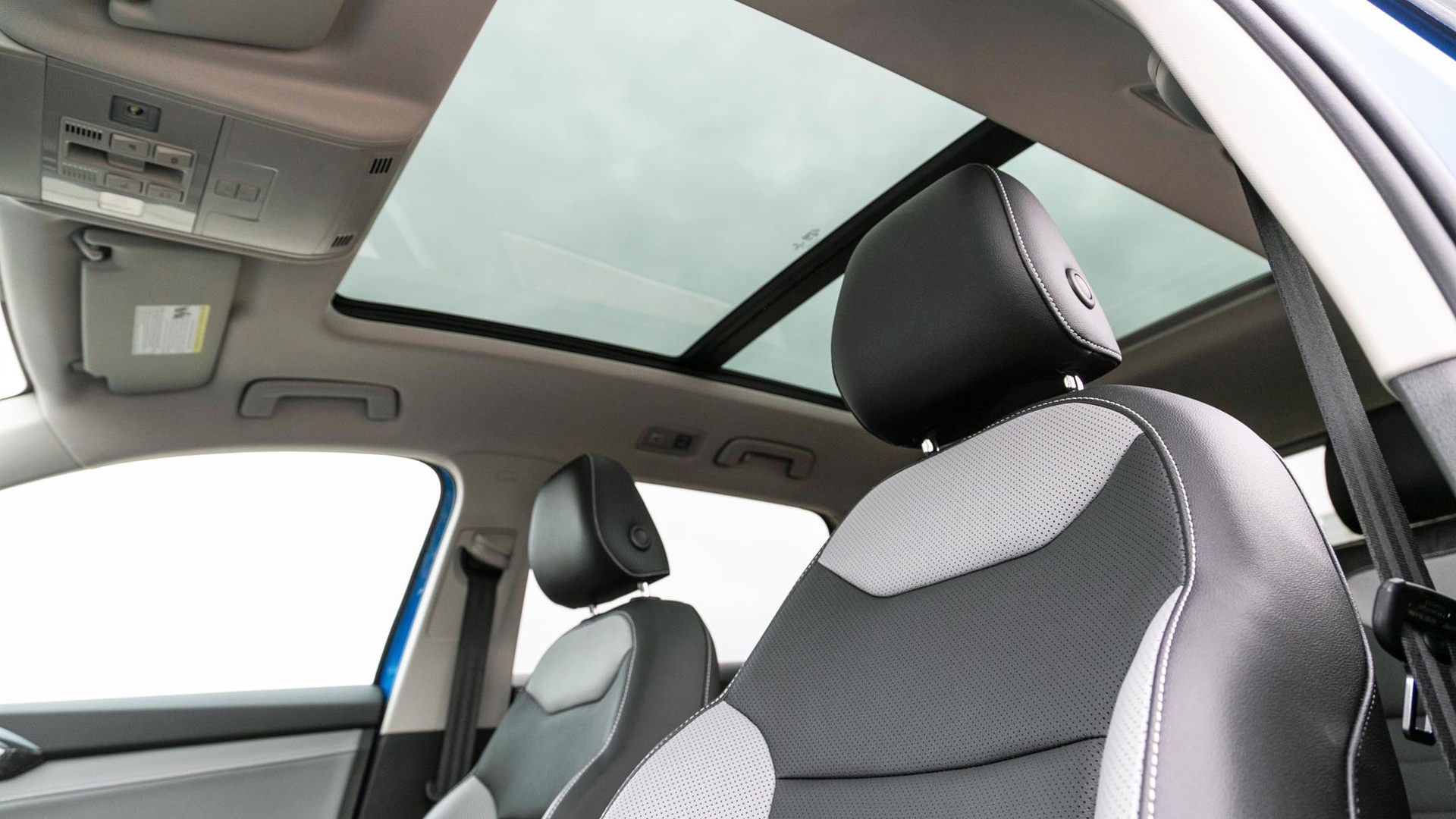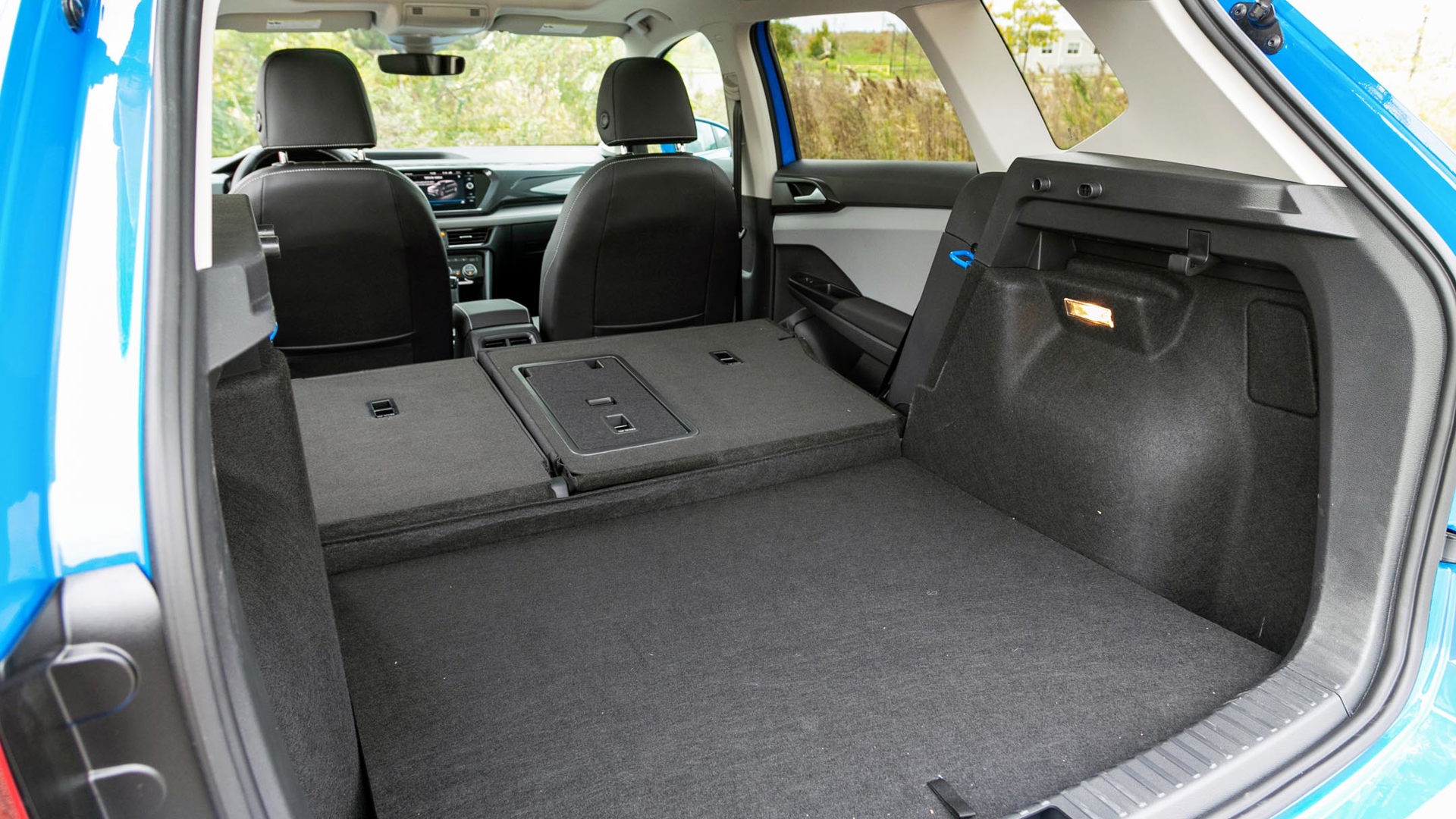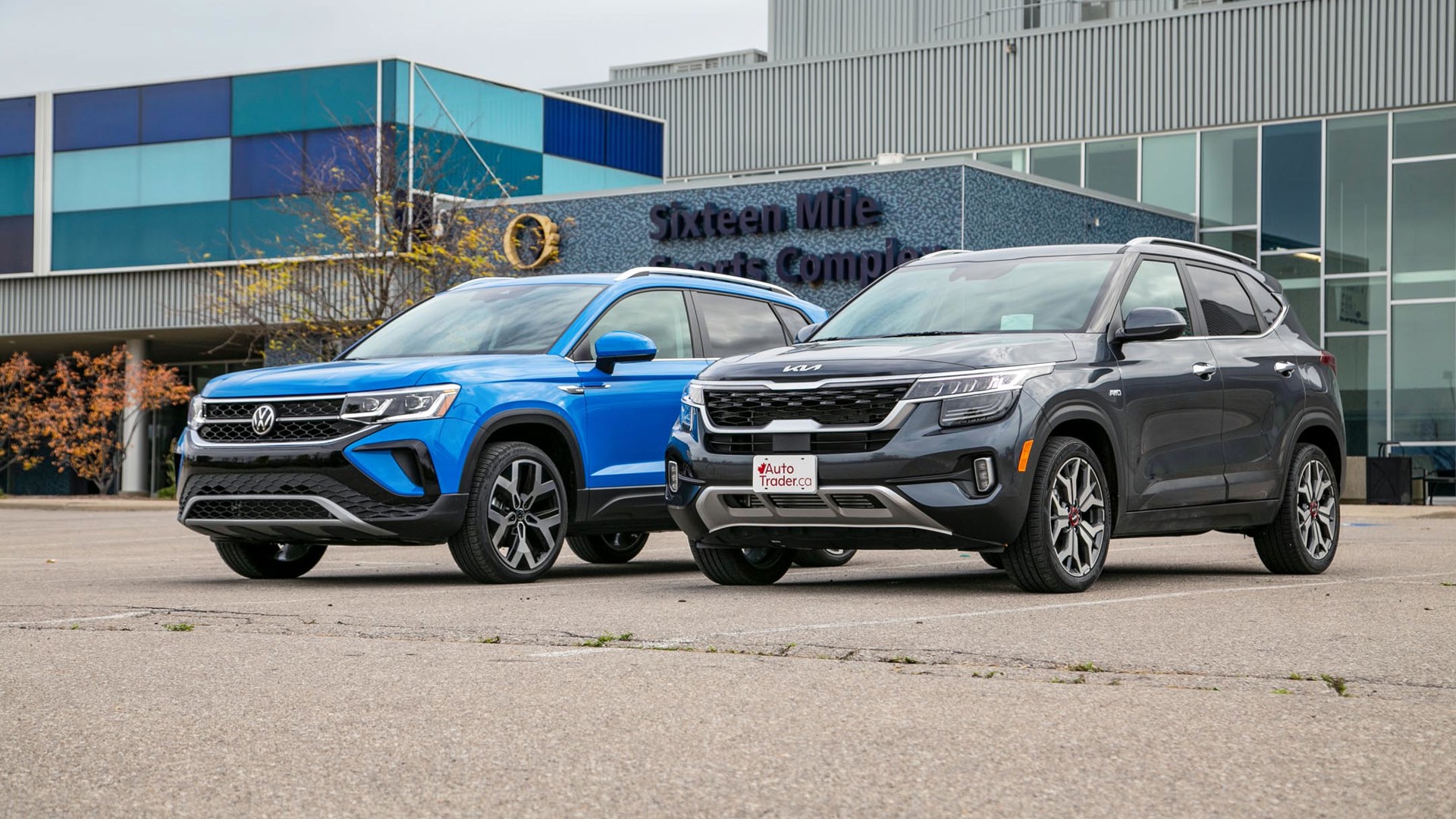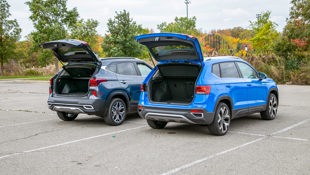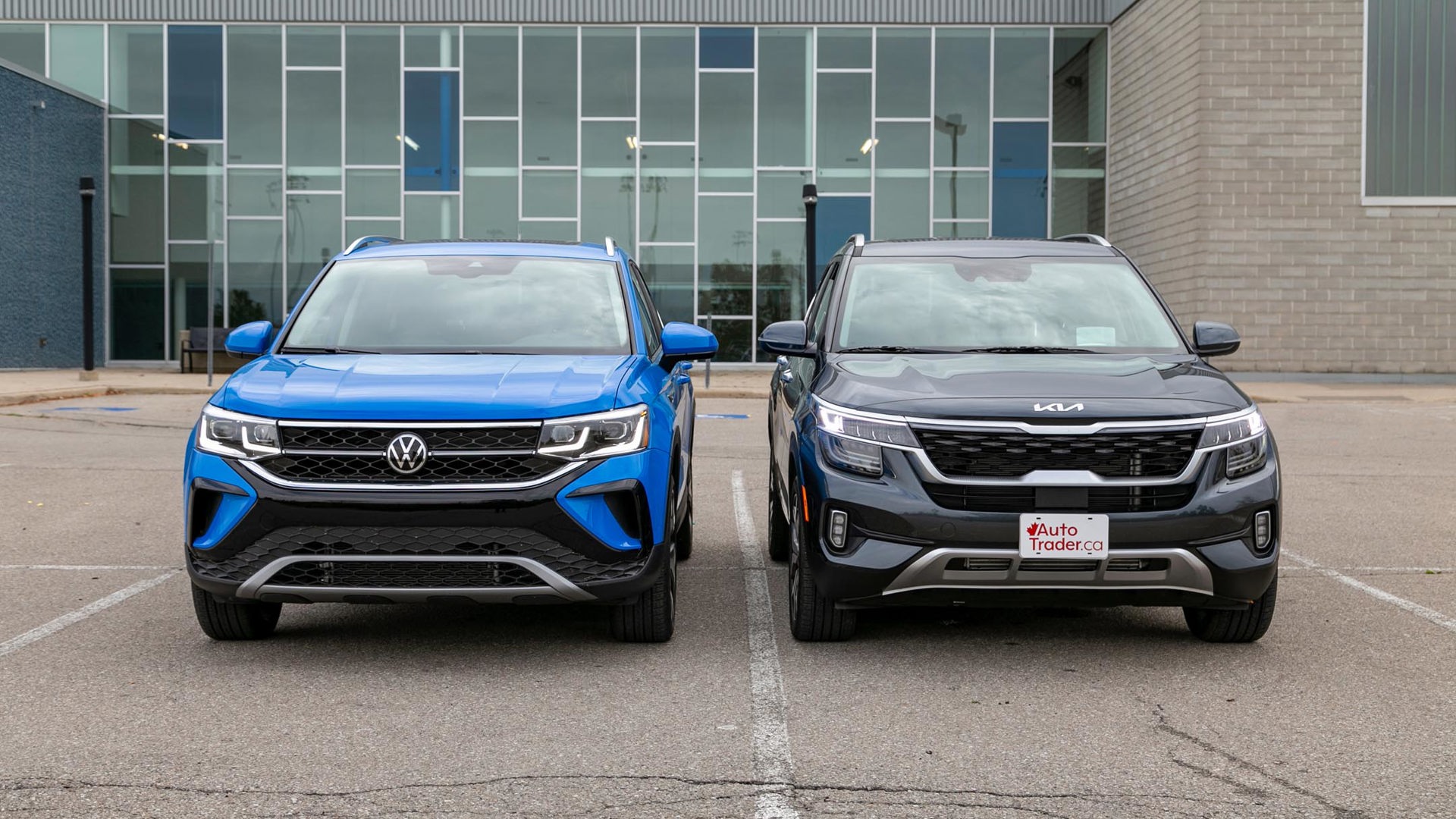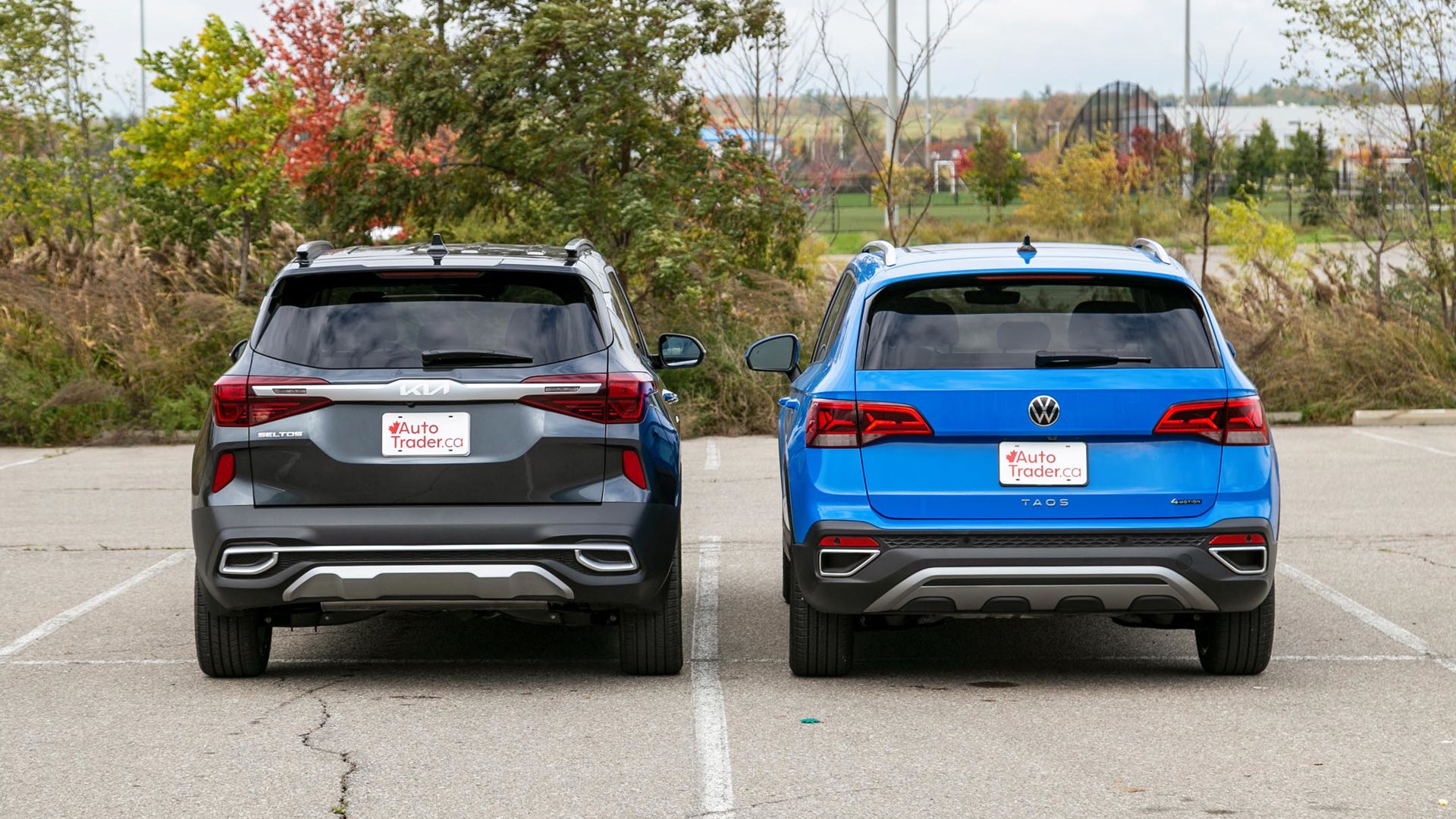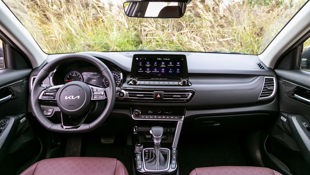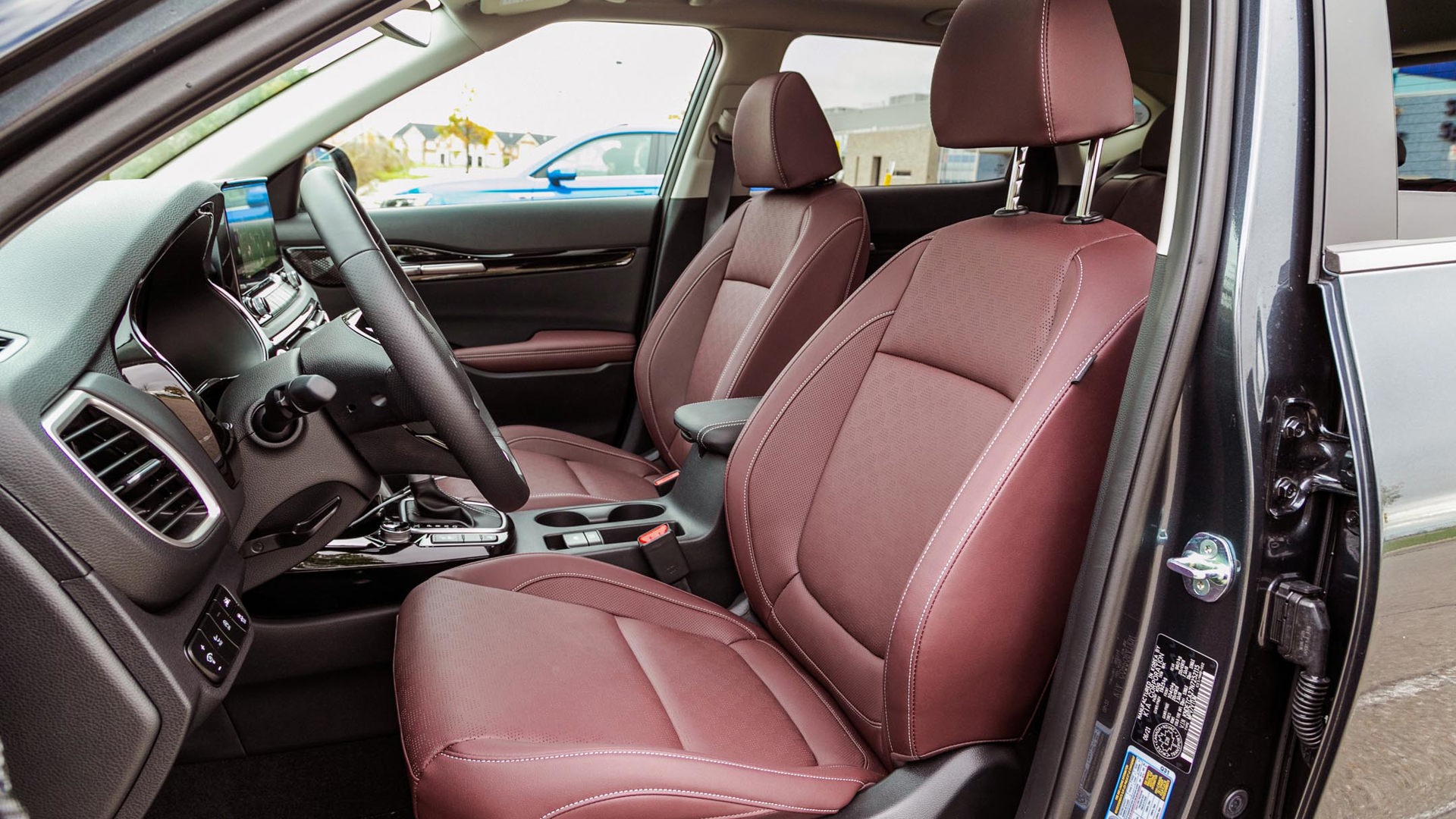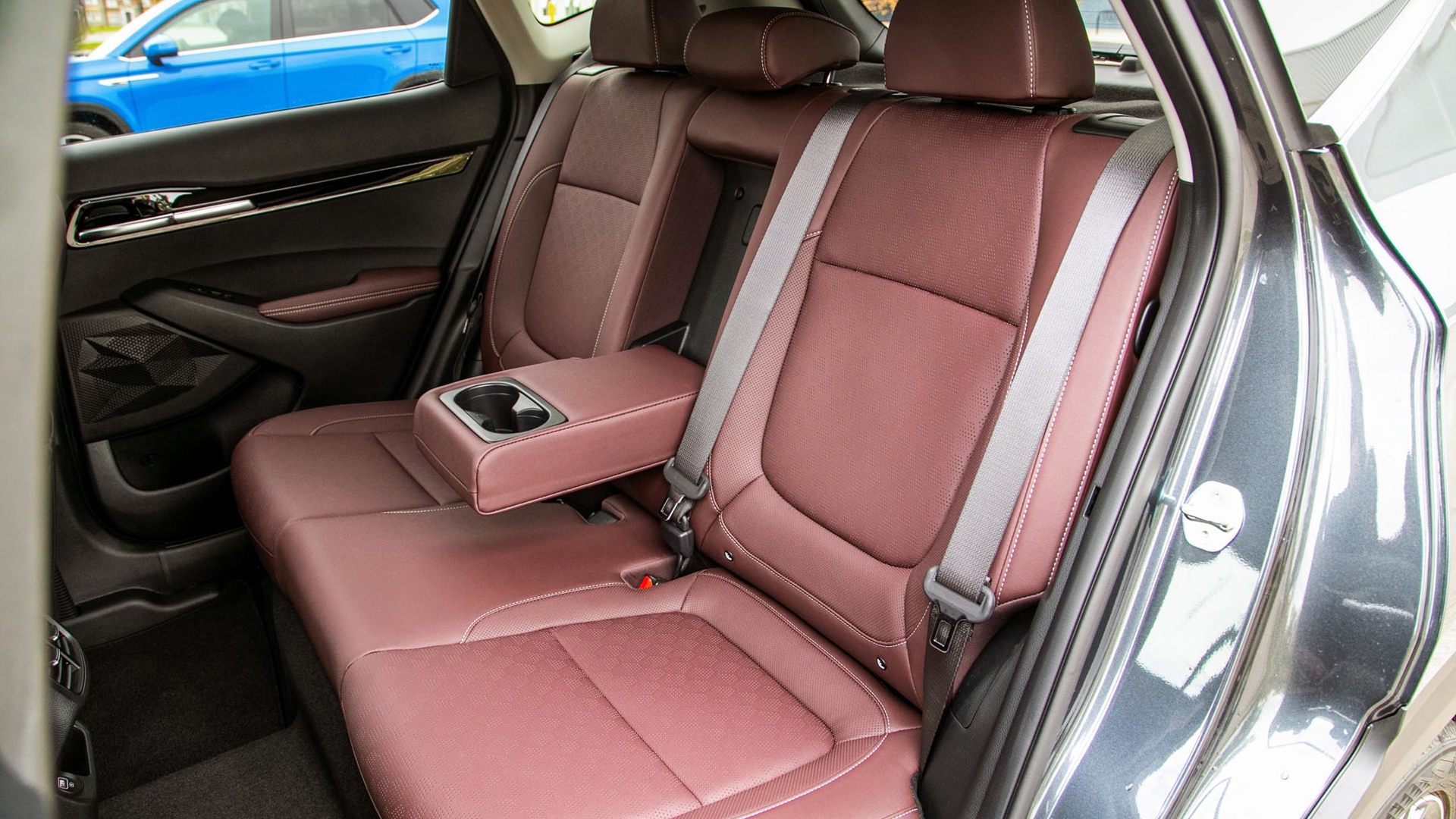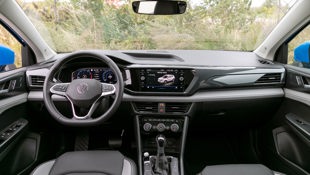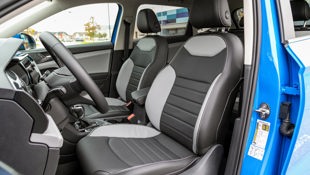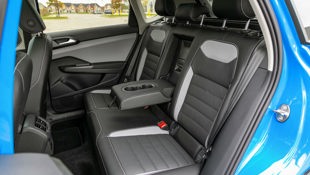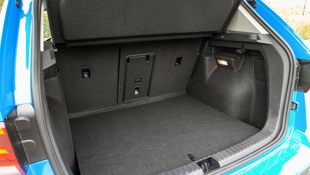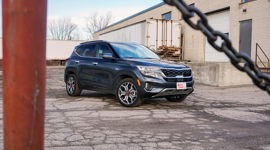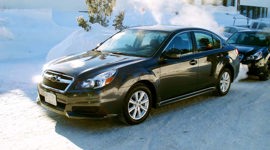Comparison Data
|
2022 Kia Seltos SX
|
2022 Volkswagen Taos Highline
|
|---|---|
|
Engine Displacement
1.6L
|
1.5L
|
|
Engine Cylinders
Turbo I4
|
Turbo I4
|
|
Peak Horsepower
175 hp @ 6,000 rpm
|
158 hp @ 5,500 rpm
|
|
Peak Torque
195 lb-ft @ 1,500 rpm
|
184 lb-ft @ 1,750 rpm
|
|
Fuel Economy
9.4 / 7.9 / 8.7 L/100 km cty/hwy/cmb
|
9.5 / 7.4 / 8.5 L/100 km cty/hwy/cmb
|
|
Cargo Space
752 / 1,778 L seats folded
|
790 / 1,866 L seats folded
|
|
Base Price
$32,995
|
$36,695
|
|
A/C Tax
$100
|
$100
|
|
Destination Fee
$1,795
|
$1,950
|
|
Price as Tested
$35,140
|
$40,245
|
|
Optional Equipment
$250 – Gravity Grey paint, $250
|
$1,500 – 19" wheels, $500; Advanced Driver Assistance Package, $1,000
|
When it comes to car shopping, we humans can be a fickle bunch.
As much as our fashions can change with the trends, our favourite rides can seem to shift on a whim. Heck, it was less than a year ago that the experts here at AutoTrader.ca chose the Kia Seltos as the Best Subcompact SUV for 2021, and here we are already eagerly looking to the next shiny, new crossover to come along: the 2022 Volkswagen Taos.
That’s why we decided to put the top-of-the-line 2022 Kia Seltos SX wearing a spiffy new logo up against an eye-catching Cornflower Blue VW Taos Highline, and something became immediately clear: buyers in the subcompact crossover category are truly spoiled for choice.
Styling
There seems to be two schools of thought on what a little crossover should look like. To some, they’re funky little urban runabouts that place fashion over function (see the Hyundai Kona, Mazda CX-30, and Toyota C-HR). Then, there are those that place more emphasis on space and sensibility, which is where both the Seltos and Taos seem to fit.
They’re taller and boxier than those other competitors, and yet the designers aren’t satisfied to throw a grille on a box and call it a day. Despite their tidy dimensions, there’s enough flourish in the look of them to instill a sense of ownership pride.
Particularly in its top spec, the Taos looks decidedly premium, borrowing plenty of styling traits from its much larger Atlas sibling. The Seltos looks good from all angles except its awkwardly styled front end – a bit of a surprising misstep in what’s otherwise a stunningly designed Kia lineup.
Inside, the designers have done a thorough job of polishing up a fairly entry-level cabin. Most of the areas that a driver or passenger touches are finished in soft materials, and there are enough silver-painted trim bits to help liven the spaces up. The Kia’s burgundy leather is decorated with a honeycomb-like pattern of perforations, while the two-tone black and grey leather in the Volkswagen adds a nice contrast.
Kia Seltos: 7/10; Volkswagen Taos: 8/10
Comfort
Both the Taos and Seltos offer elevated seating positions allowing for great forward visibility. The VW’s greater height provides more headroom, and its larger panoramic sunroof doesn’t impact the rear-seat head space the way the Kia’s smaller sunroof does.
The front seats offer ample space and support, and in both machines, they’re heated and ventilated – a luxurious touch in this class of vehicle – while the Kia even heats the rear seats. Legroom in the rear seats is virtually the same, and enough that a pair of adults should have little to complain about. Sitting three across back there, however, might feel a little snug in the shoulder-room department.
Sound deadening isn’t to luxury car levels, but it’s still impressive that wind and road noise can be as hushed as it is in these affordable sport utes. The Seltos offers a decent ride while the Taos is notably stiffer, with its optional 19-inch wheels surely doing it no favours in this department.
Kia Seltos: 7.5/10; Volkswagen Taos: 7/10
Features
The trickle-down of technology in recent years has been much more of a torrent flow and consumers are benefitting. Such is the case here, with these two chock-full of features, many of which would’ve only been found on premium products just a few years ago.
Beyond the heated and cooled seats, both have heated steering wheels. There’s onboard navigation, wireless charge pads, and the Volkswagen even includes an all-digital display that can be configured to the driver’s preferences. Kia adds a head-up display that, admittedly, contributes to the complexity of the number of places one needs to look to get information.
The Taos not only has dual-zone climate control versus the Kia’s single-zone, but it also offers HVAC vents on the back of the centre console. Volkswagen’s audio system sounded better than the hollow system in the Seltos. Both offer satellite radio.
On the outside, they’ve both got roof rails (though the accompanying cross bars are an accessory from either company), and they both wear fashionably large wheels (18-inch on the Kia, 19s on the VW). Curiously, neither one has a power-actuated tailgate, which, as the top-tier offering for these models, is somewhat surprising in spite of their sizes.
Kia Seltos: 8/10; Volkswagen Taos: 8.5/10
Safety
In their priciest states, these two are fitted with plenty of safety features. Adaptive cruise control, forward collision avoidance, rear cross-traffic collision avoidance, blind-spot monitoring, and lane-keeping assistance, as well as a collection of airbags are packed into each. Both offer downhill braking control in the off-chance an owner takes one of these little utes on a steep and slippery off-road trail, but when travelling in deeper snow, the Kia offers a locking differential to help the Seltos avoid getting stuck.
While the Kia has earned a Top Safety Pick rating from the Insurance Institute for Highway Safety (IIHS) and a 4/5-star rating from the United States National Highway Traffic Safety Administration (NHTSA), the Taos had yet to be evaluated by either body at the time of this writing.
Kia Seltos: 8/10; Volkswagen Taos: 8/10
User Friendliness
Both manufactures have done commendable jobs of providing sensible control layouts with knobs for volume and tuning control, as well as the HVAC system, all of which fall easily to hand. The same is true for accessory features like the seat heaters or drive mode selectors that are quickly found with a passing glance, but Volkswagen’s more modern infotainment system not only permits the configuration of preferred information displayed in the gauge pod, but also offers wireless connectivity to the system and simpler menu navigation.
The Kia’s system requires a hardwire connection, and the wireless charge pad is hidden away in a spot that makes it very easy to forget one’s phone when exiting the vehicle. Worse, though, every time a message was dictated through CarPlay, the music wouldn’t re-start, requiring a multi-push sequence to not only get the radio to start playing again, but then needing the driver to find the station all over again as well.
Kia Seltos: 7/10; Volkswagen Taos: 8/10
Power
On paper, the Kia’s larger 1.6L turbocharged four-cylinder provides notably more power, with 175 hp at 6,000 rpm versus the Volkswagen’s new 1.5L turbo four offering up only 158 hp at 5,500 rpm. The Taos’s torque figure of 184 lb-ft at 1,750 rpm is closer to the Kia’s 195 from 1,500 rpm, however.
On the road, the reality is that both machines feel similarly peppy, but when pressing hard to merge at highway speeds, or when passing, the Kia’s greater thrust is notable and appreciated.
Kia Seltos: 7.5/10; Volkswagen Taos: 7/10
Driving Feel
Kia and Volkswagen have fitted these little crossovers with seven-speed dual-clutch automatic transmissions (DCTs). Upon meeting up for our photo day, Editor-in-Chief Jodi Lai had been driving the Taos, while yours truly had been spending time with the Seltos. Jodi expressed her considerable displeasure with the VW’s gearbox which seemed to struggle to find the right gear at times, and making rather harsh shifts other times.
After driving the Kia, however, the Taos’s transmission seemed downright cooperative by comparison. Not only did the Seltos’s transmission spasm with its shifts, it seemed hell-bent on being in too tall a gear no matter what the driving mode, resulting in a sluggish feel pulling away from a stop. What’s more, in stop-and-go-traffic, or when tootling around a parking lot, the Kia could be felt doing a herky-jerky shudder as the clutches slipped.
DCTs are meant to offer up greater driving engagement with sportier, quicker shifts, usually at the expense of some smoothness. When driven in a spirited manner, the Volkswagen’s is obedient, corresponding with its generally playful driving feel, whereas the Kia’s simply feels sluggish and frustrating. For these vehicles, a smoother, traditional automatic transmission would be a better choice.
The Taos’s harsher ride is a trade-off of its nimbler handling with more immediate bite on turn-in and good control when cornering. Jodi disagreed, preferring the Kia’s handling characteristics more, with the takeaway here being that they’re close enough that buyers should be plenty satisfied with either on the occasional backroad switchback.
Braking is fine with both utes offering good pedal feel and plenty of stopping power.
Kia Seltos: 7/10; Volkswagen Taos: 8/10
Fuel Economy
With official ratings of 9.5 L/100 km in the city, 7.4 on the highway, and 8.5 combined, the Taos’s consumption rates are nearly identical to the Seltos’s 9.4/7.9/8.7 figures; and on our test day, the Kia was showing an average of 0.1 L/100 km better. Both have 50-L fuel tanks, so range should be essentially the same, and they’re both content with regular unleaded gas.
Kia Seltos: 8/10; Volkswagen Taos: 8/10
Practicality
The Taos is intended to replace Volkswagen’s Golf hatchback in North America thanks to buyers’ tastes leaning toward the perceived greater practicality of SUVs. While basic front-wheel-drive variants are available for each model, the two testers were fitted with all-wheel drive that’ll help driver confidence when the going gets slippery (though a good set of winter tires on a front-wheel-drive version should do just fine for most Canadian motorists).
With 752 L of space behind the backseat, the Seltos rates among the more spacious of the subcompacts, but it still falls short of the Taos’s 790 L. The opening is larger and the liftover height is lower for the Volkswagen as well, and with the split-folding rear seats flopped forward, the Volkswagen will swallow 1,866 L of stuff compared to the 1,778 L in the Kia.
Those looking to tow a little utility trailer will want to choose the Kia with its modest 680-kg (1,500-lb) limit still besting the Volkswagen for which towing isn’t recommended.
Kia Seltos: 8/10; Volkswagen Taos: 8.5/10
Value
Starting out at $23,395 for an LX front-wheel-drive version, the Seltos is a well-equipped entry-level offering. At $32,995, the range-topping Seltos SX Turbo is packed with features for a truly decent price. Those prices don’t include a non-negotiable freight charge that adds $1,795 to the price.
The Taos is also quite well-kitted in its front-wheel-drive Trendline format at $26,695. The middle-trim Comfortline with all-wheel drive rings in at $32,395 and is the best value in the lineup, unless a buyer just has to have the fanciest trimmings found in the Highline at $36,695. Likewise, freight tacks on another $1,950 regardless of trim.
Our Highline tester also added $500 for those 19-inch wheels and another grand for an option package that adds a few of the active safety features and adaptive cruise control, tallying more than $38,000 before freight and taxes, and making it not only one of the costliest entries in the class, but tough to argue as the better value here.
Kia Seltos: 8/10; Volkswagen Taos: 7/10
The Verdict
Volkswagen’s new Taos is a stylish and spacious entry in the subcompact crossover category, and a properly fun-to-drive machine. But when optioned up to be comparable to competitive products, it’s a costly little machine. Kia’s Seltos may not be as engaging to drive, but it’s a solid, comfortable, and practical choice. Add in the Kia’s killer value and it remains an excellent option in the segment, and the winner of this comparison.

